Page 36:
Sipadan turtles, 1991.
- Djakarta : smiles in the dirt, 1991.
- Bali with scuba-diving in Tulamben, 1991.
The island of Bali in Indonesia is often referred to as a paradise on Earth, but we found it to be also a paradise underwater.
- Head shots, 1985. |

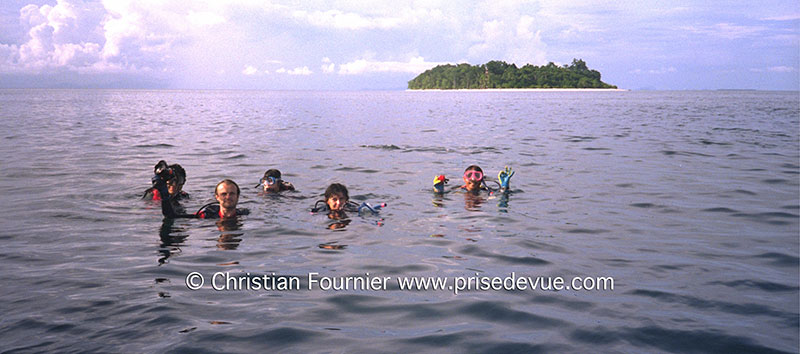 - 1992 : Turtle rescue in Sipadan. - 1992 : Turtle rescue in Sipadan.
Sauvetage d'une tortue à Sipadan. Avec Dr Nicole Bordes.
|
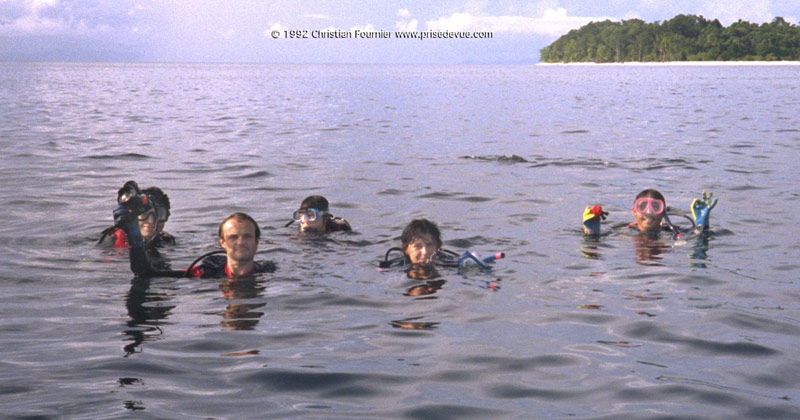
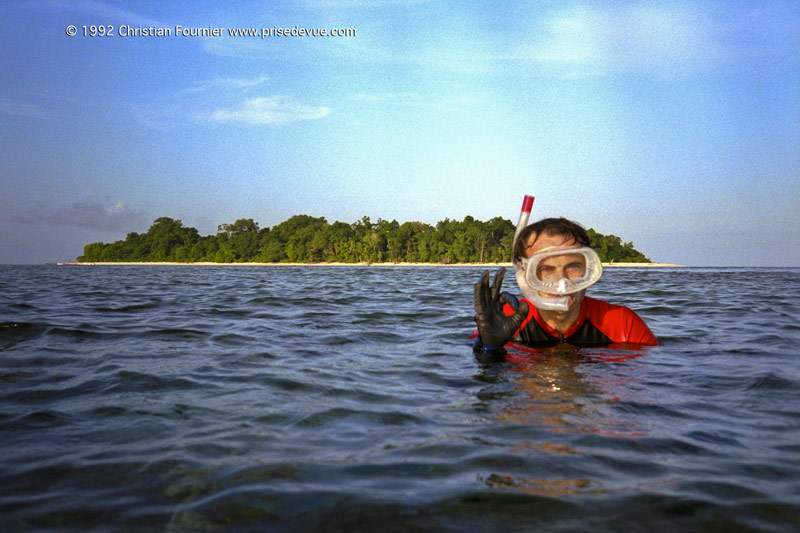
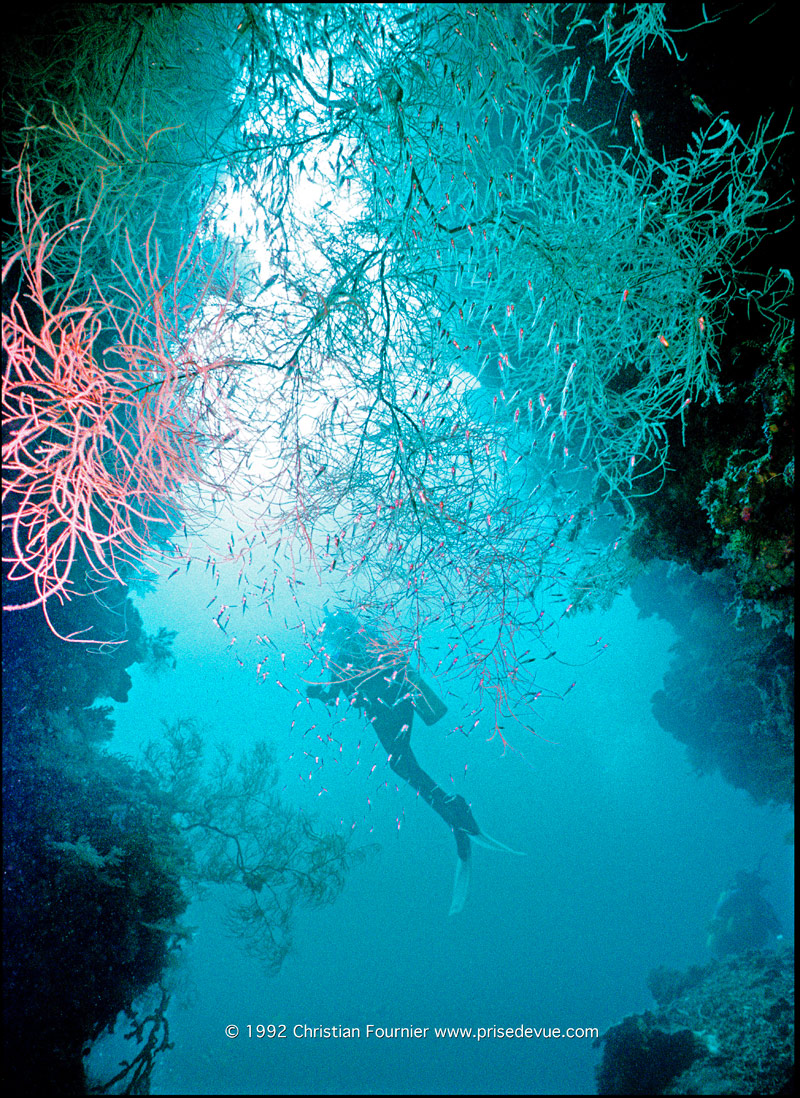
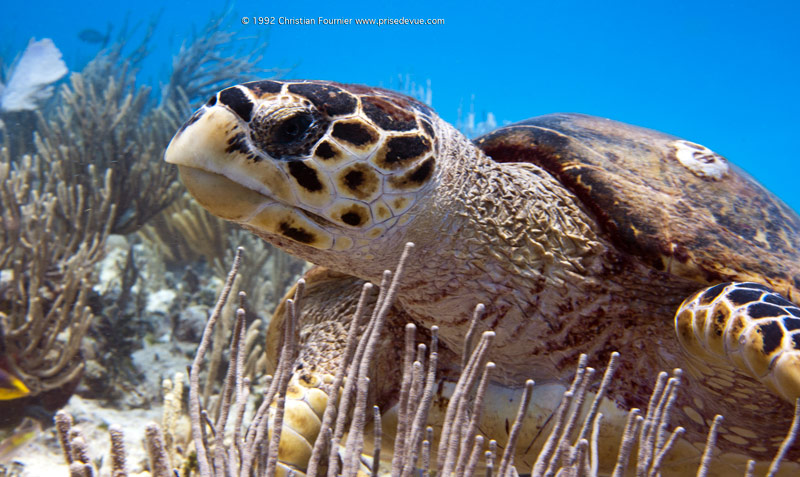
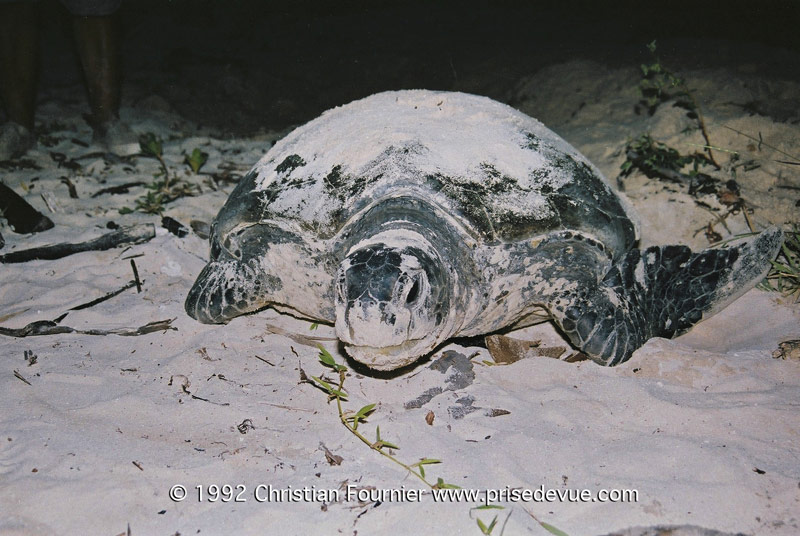
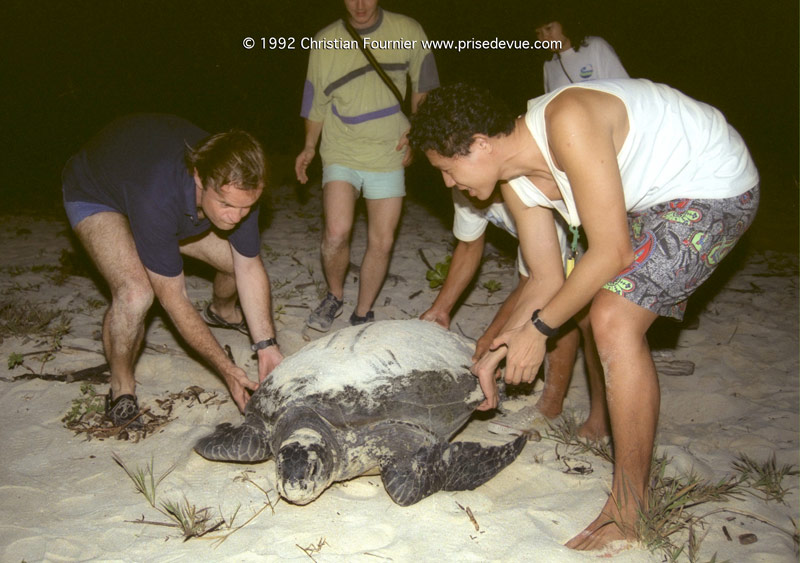 |
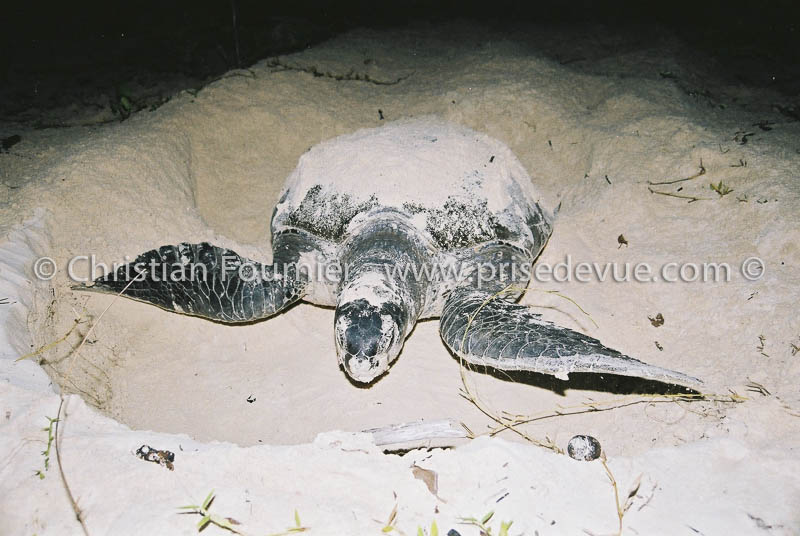 |
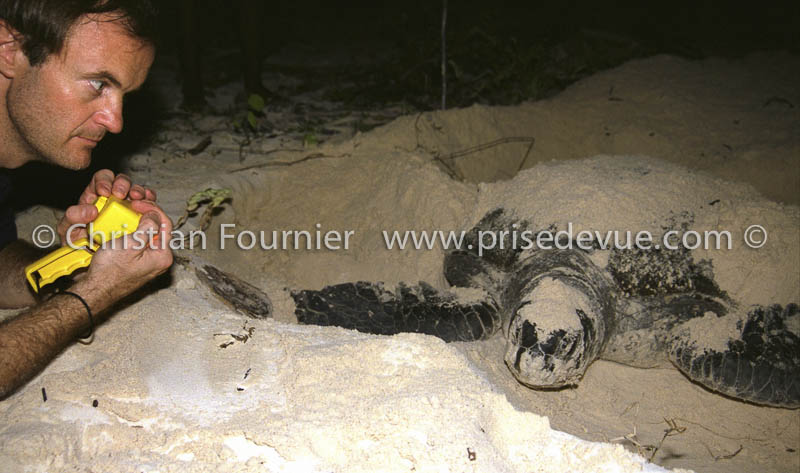 |
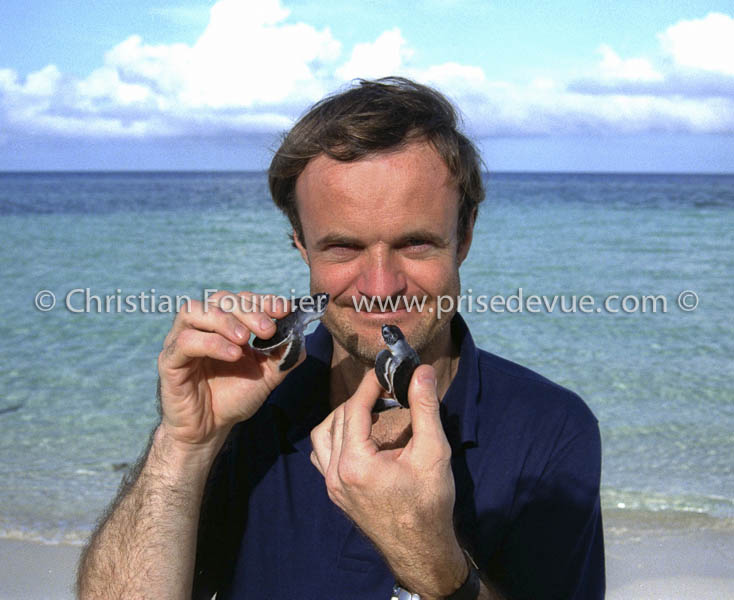
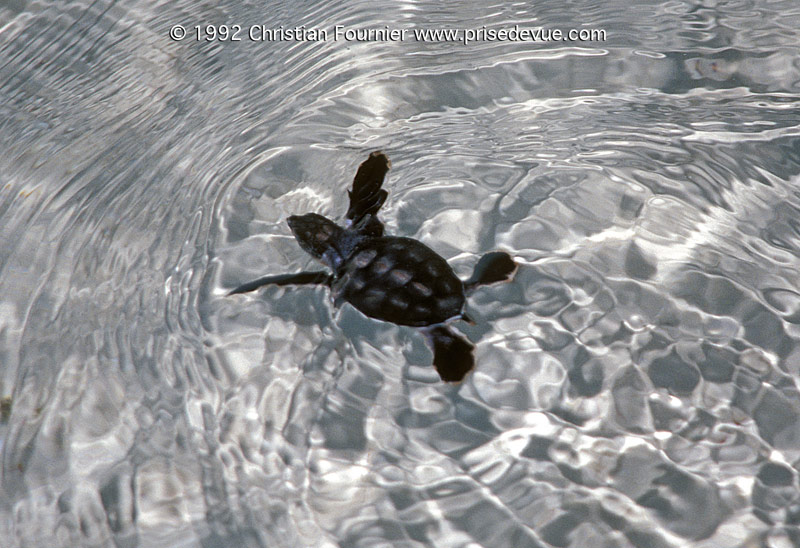 |
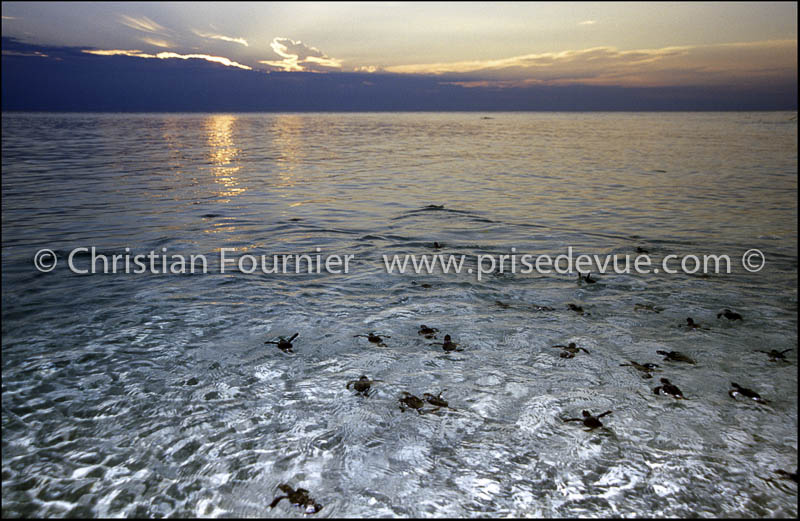
These little turtles were born less than an hour ago.
|

Jakarta: Smiles in the dirt
|
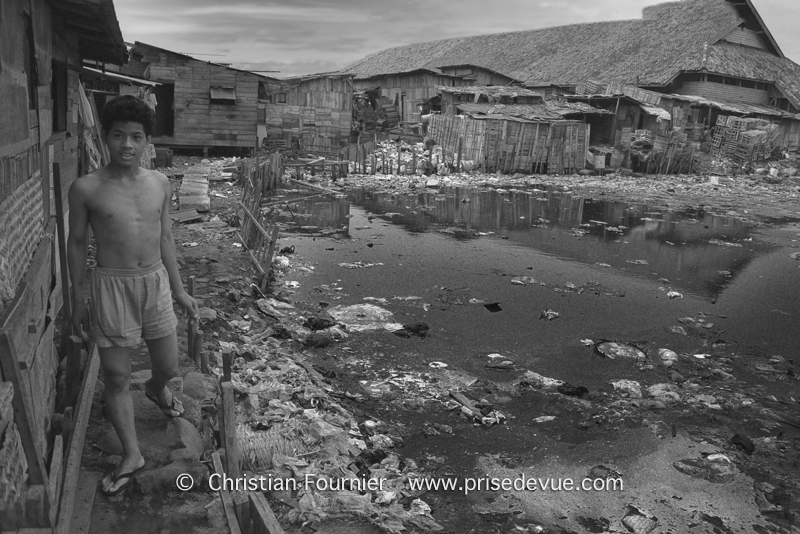 |
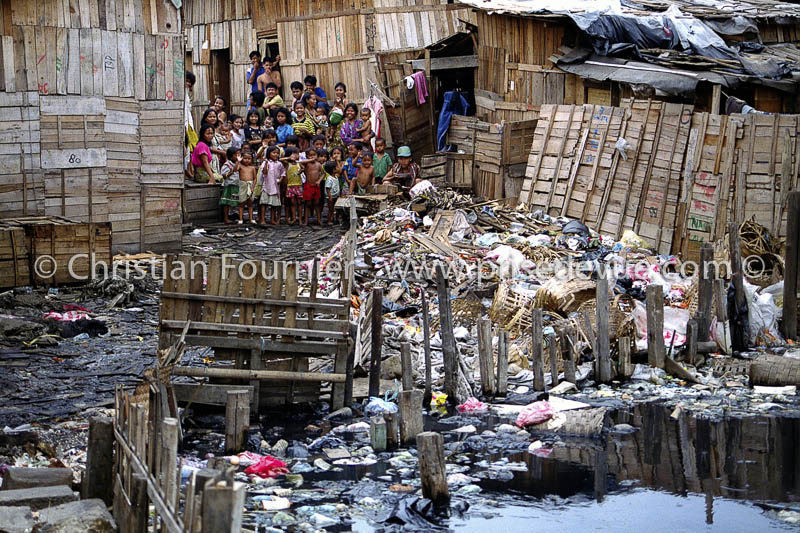 |
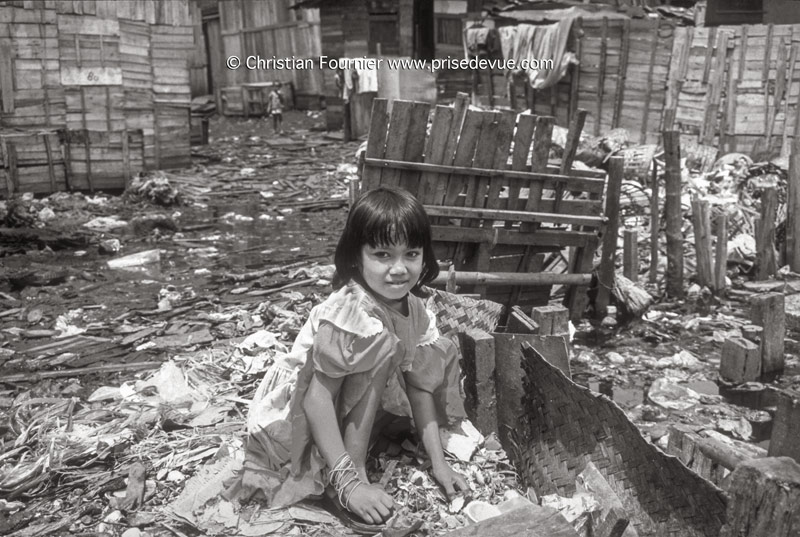 |
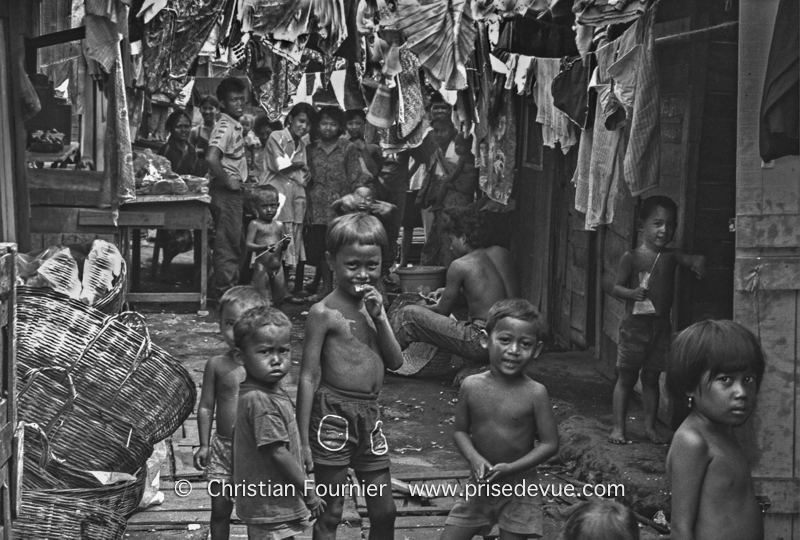 |
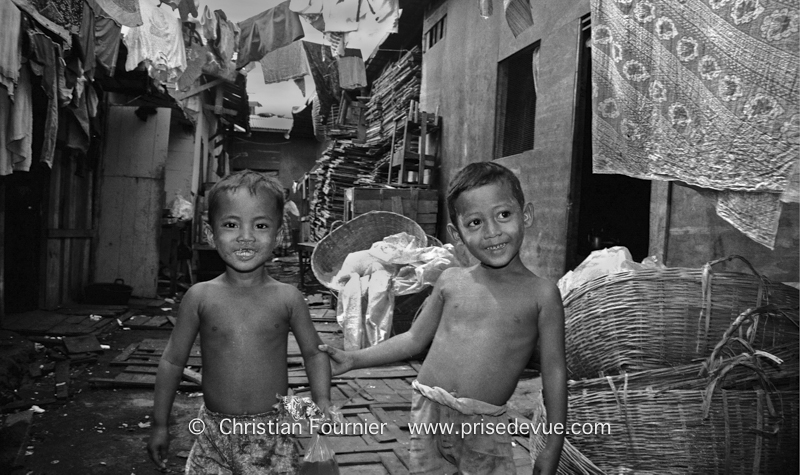 |
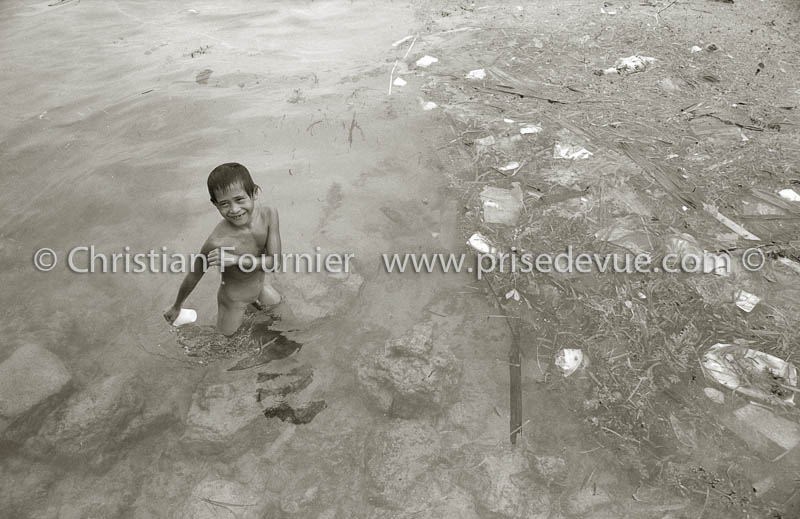 |
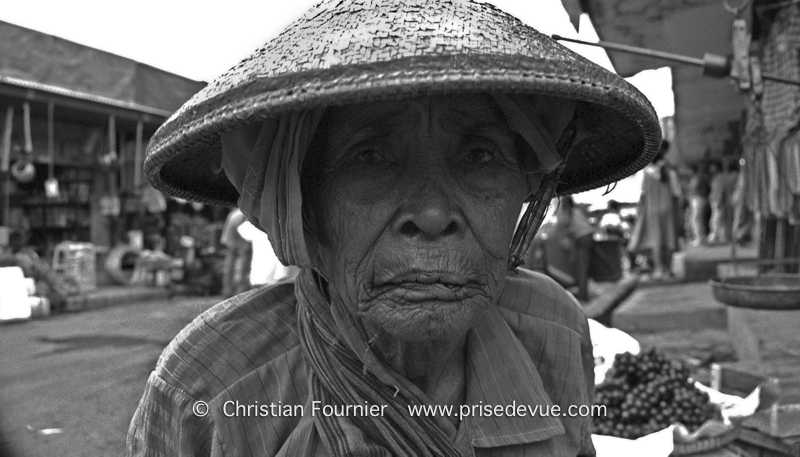 |
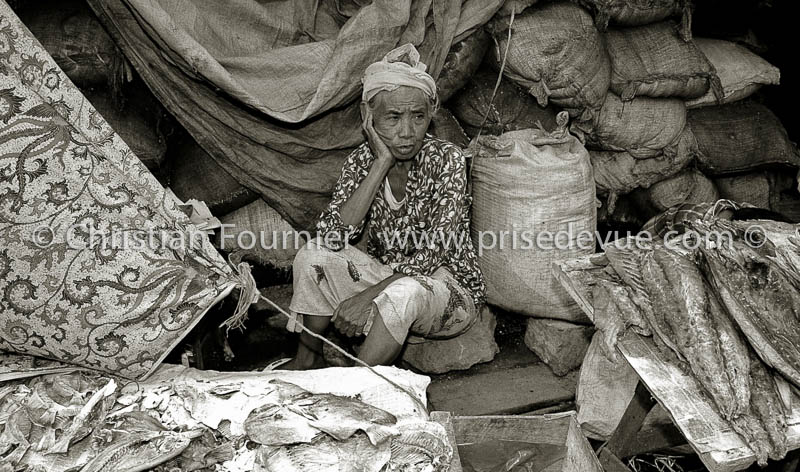 |
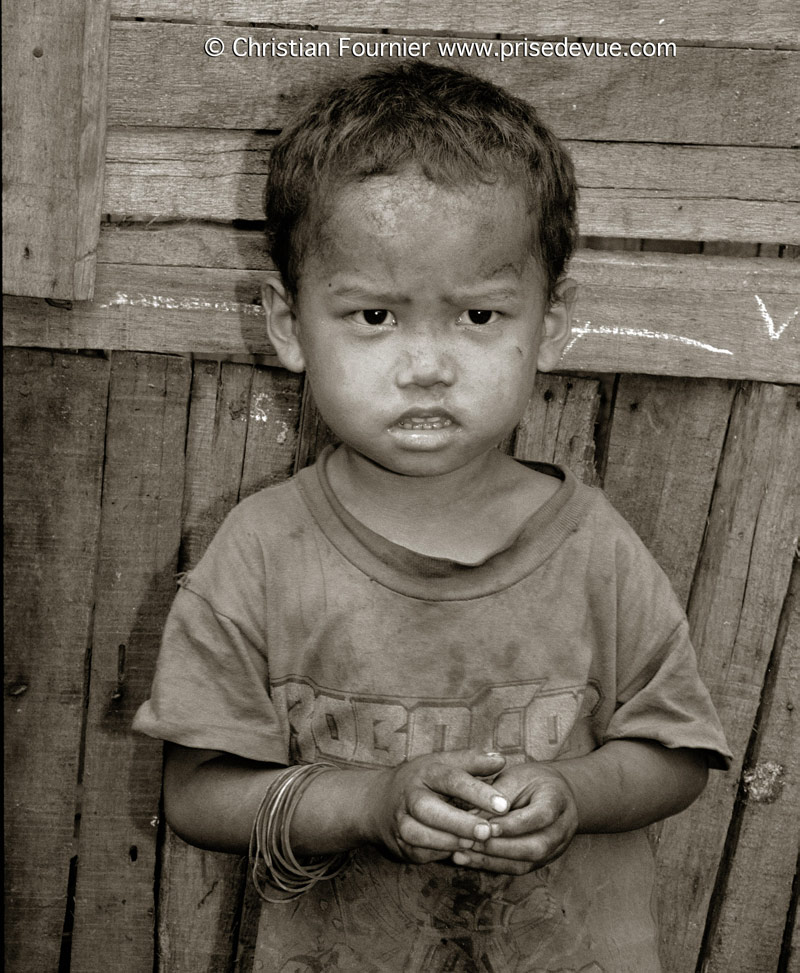 |
 |
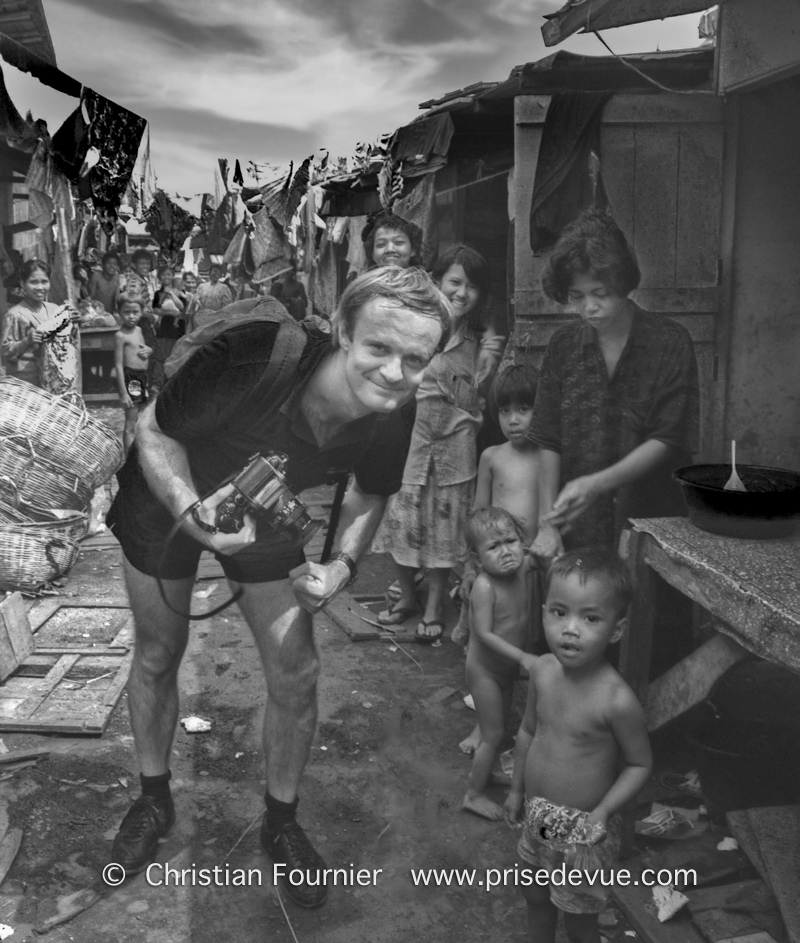 |
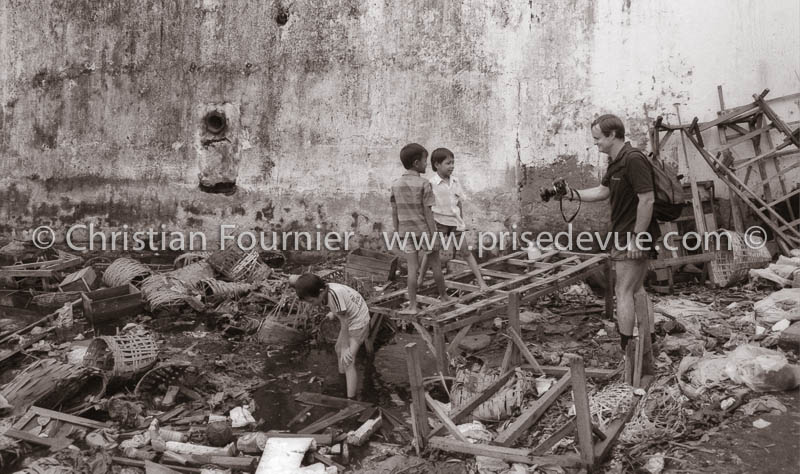
J'ai mis un objectif fish-eye et shoot au jugé pour être proche des enfants sans les perturber.
I put on a fish-eye lens and shot by guesswork to be close to the children without disturbing them.
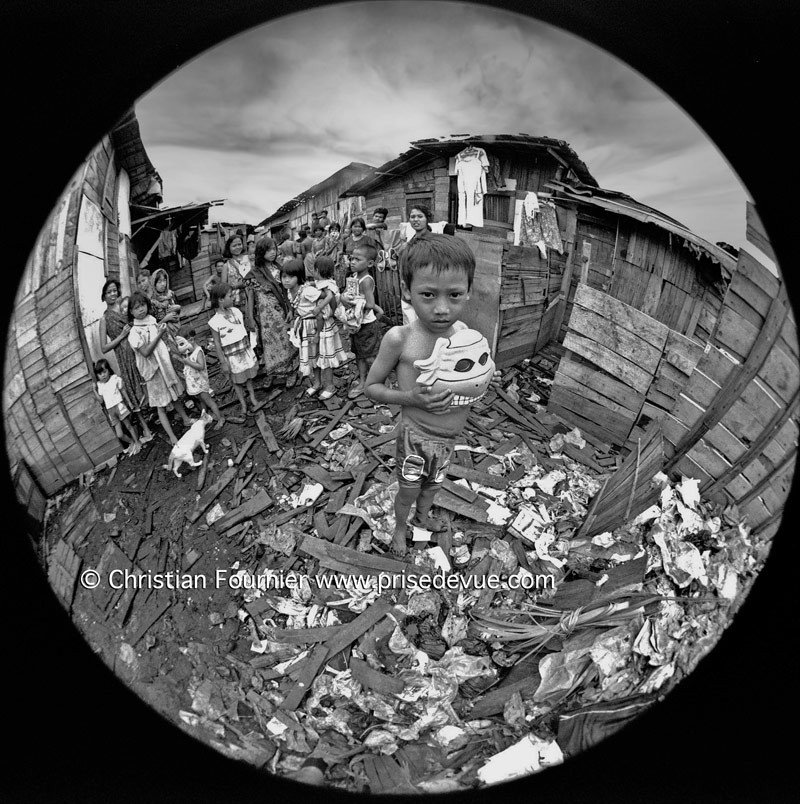
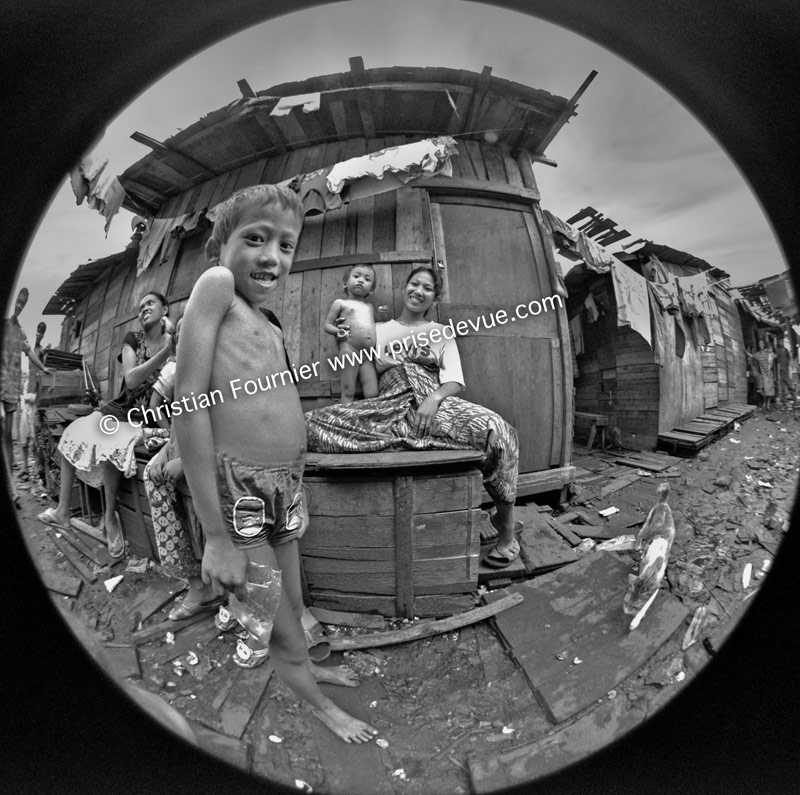
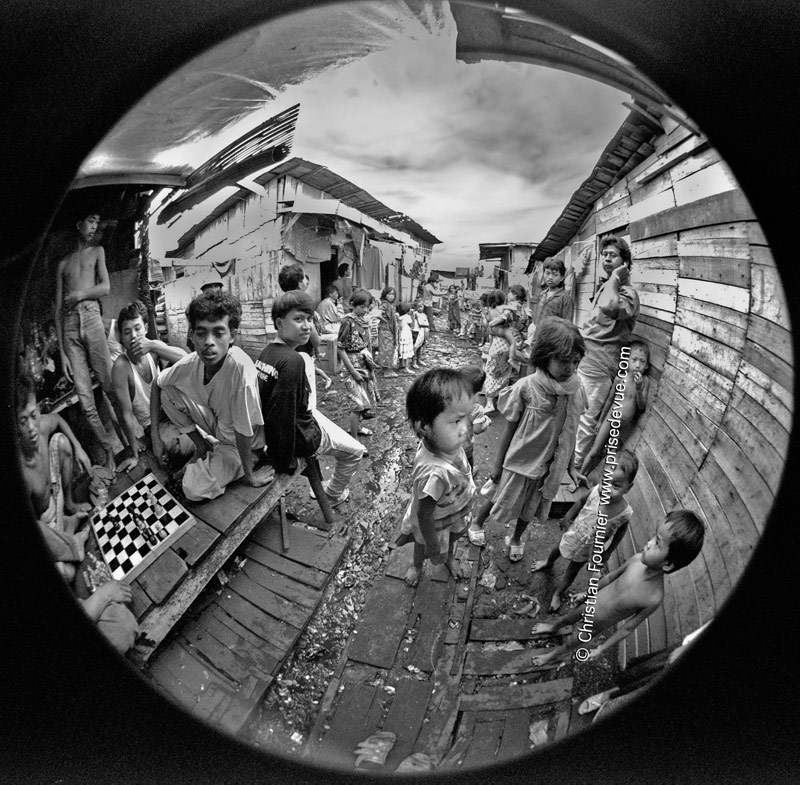
|
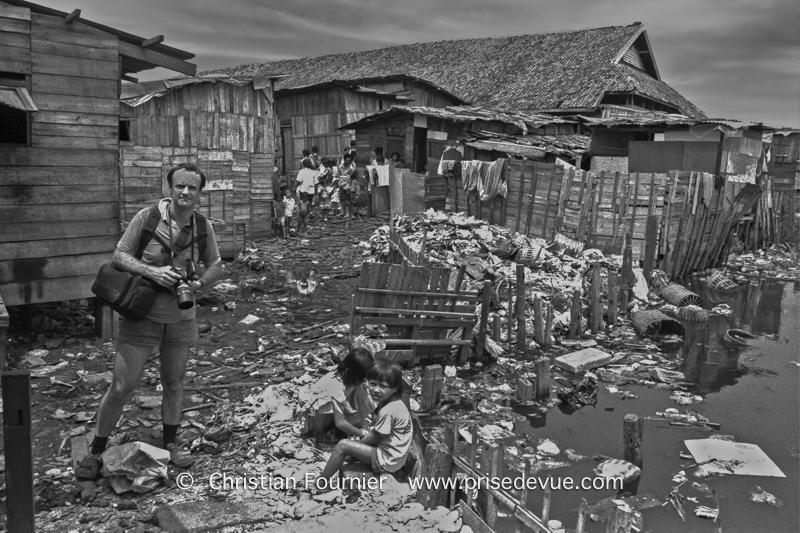 |
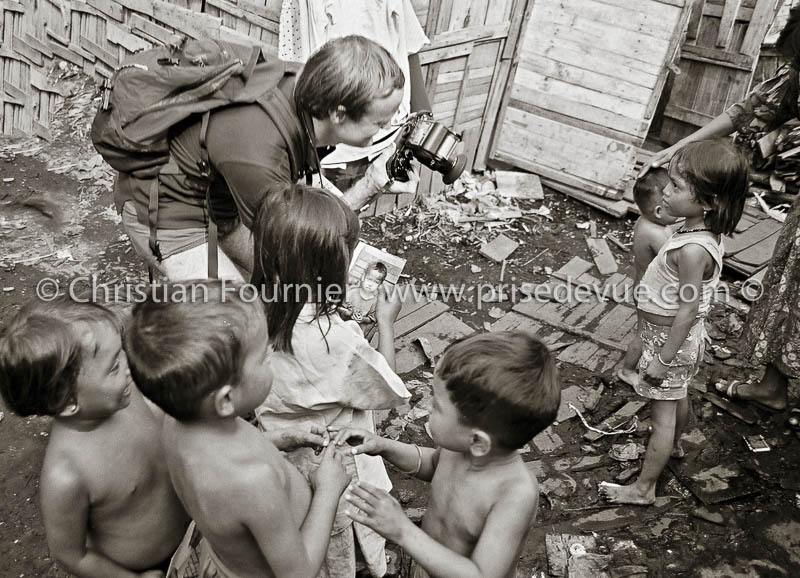 |
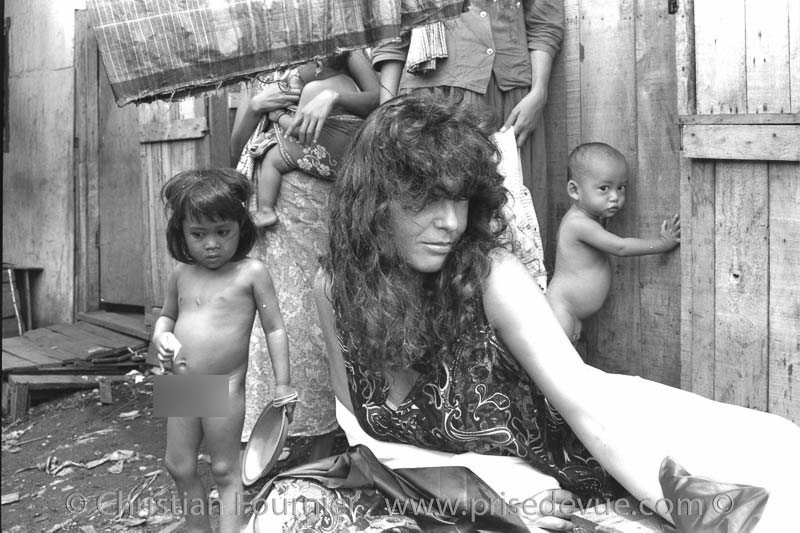 |
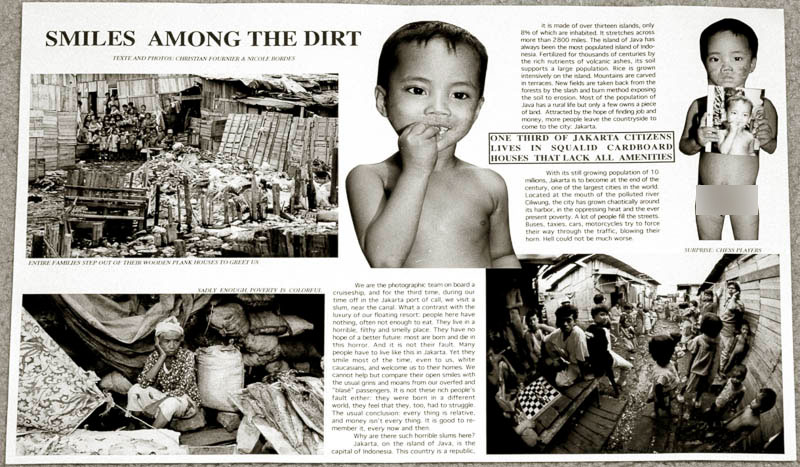 |
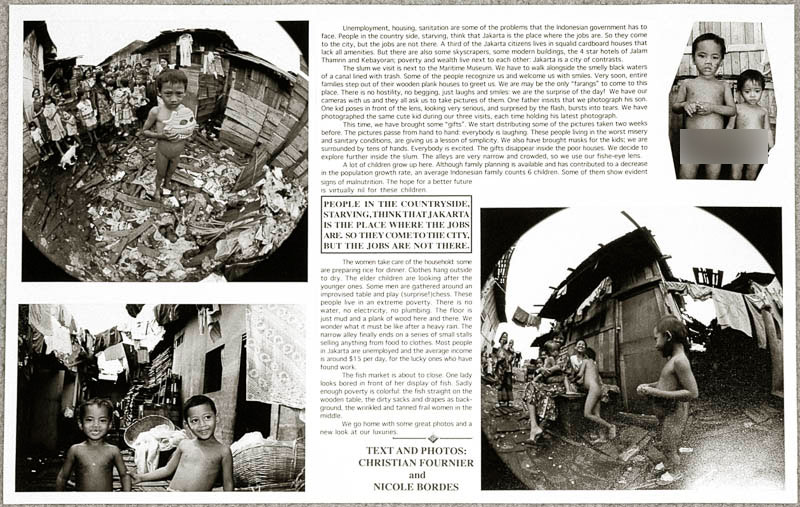 |
Jakarta : smiles in the dirt
|
We visit a Jakarta slum, near the canal. What a contrast with the luxury of our floating resort : people here have nothing, often not enough to eat. They live in a horrible, filthy and smelly place.
|
They have no hope of a better future : most are born and die in this horror. And it is not their fault. Many people have to live like this in Jakarta. Yet they smile most of the time, even to us, white Caucasians, and welcome us to their homes. We cannot help but compare their open smiles with the usual grins and moans from our overfed and "blasé" passengers. It is not these rich people's fault either : they were born in a different world, they feel that they, too, had to struggle. The usual conclusion : every thing is relative, and money isn't every thing. It is good to remember it, every now and then.
Why are there such horrible slums here ?
|
Jakarta, on the island of Java, is the capital of Indonesia. This country is a republic, it is made of over thirteen islands, only 8 % of which are inhabited. It stretches across more than 2800 miles. The island of Java has always been the most populated island of Indonesia. Fertilized for thousands of centuries by the rich nutrients of volcanic ashes, its soil supports a large population. Rice is grown intensively on the island. Mountains are carved in terraces. New fields are taken back from the forests by the slash and burn method exposing the soil to erosion. Most of the population of Java has a rural life but only a few owns a piece of land. Attracted by the hope of finding job and money, more people leave the countryside to come to the city : Jakarta.
With its still growing population of 10 millions, Jakarta is to become at the end of the century, one of the largest cities in the world. Located at the mouth of the polluted river Ciliwung, the city has grown chaotically around its harbor, in the oppressing heat and the ever present poverty. A lot of people fill the streets. Buses, taxies, cars, motorcycles try to force their way through the traffic, blowing their horn. Hell could not be much worse.
Unemployment, housing, sanitation are some of the problems that the Indonesian government has to face. |
People in the country side, starving, think that Jakarta is the place where the jobs are. So they come to the city, but the jobs are not there. A third of the Jakarta citizens lives in squalid cardboard houses that lack all amenities. But there are also some skyscrapers, some modern buildings, the 4 star hotels of Jalam Thamrin and Kebayoran ; poverty and wealth live next to each other : Jakarta is a city of contrasts.
The slum we visit is next to the Maritime Museum. We have to walk alongside the smelly black waters of a canal lined with trash. Some of the people recognize us and welcome us with smiles. Very soon, entire families step out of their wooden plank houses to greet us. We are may be the only "farangs" to come to this place. There is no hostility, no begging, just laughs and smiles : we are the surprise of the day ! We have our cameras with us and they all ask us to take pictures of them. One father insists that we photograph his son. One kid poses in front of the lens, looking very serious, and surprised by the flash, bursts into tears. We have photographed the same cute kid during our three visits, each time holding his latest photograph.
This time, we have brought some "gifts". We start distributing some of the pictures taken two weeks before. The pictures passes from hand to hand : everybody is laughing. These people living in the worst misery and sanitary conditions, are giving us a lesson of simplicity. We also have brought masks for the kids ; we are surrounded by tens of hands. Everybody is excited. The gifts disappear inside the poor houses. We decide to explore further inside the slum. The alleys are very narrow and crowded, so we use our fisheye lens.
A lot of children grow up here. Although family planning is available and has contributed to a decrease in the population growth rate, an average Indonesian family counts 6 children. Some of them show evident signs of malnutrition. The hope for a better future is virtually nil for these children. The women take care of the household : some are preparing rice for dinner. Clothes hang outside to dry. The elder children are looking after the younger ones. Some men are gathered around an improvised table and play (surprise ! )chess. These people live in an extreme poverty. There is no water, no electricity, no plumbing. The floor is just mud and a plank of wood here and there. We wonder what it must be like after a heavy rain. The narrow alley finally ends on a series of small stalls selling anything from food to clothes. Most people in Jakarta are unemployed and the average income is around $15 per day, for the lucky ones who have found work.
The fish market is about to close. One lady looks bored in front of her display of fish. Sadly enough poverty is colorful : the fish straight on the wooden table, the dirty sacks and drapes as background, the wrinkled and tanned frail women in the middle.
We go home with some great photos and a new look are our luxuries.
Photos : Christian Fournier, texte Christian Fournier et Nicole Bordes
|
 |
 |
Bali with scuba-diving in Tulamben.
|
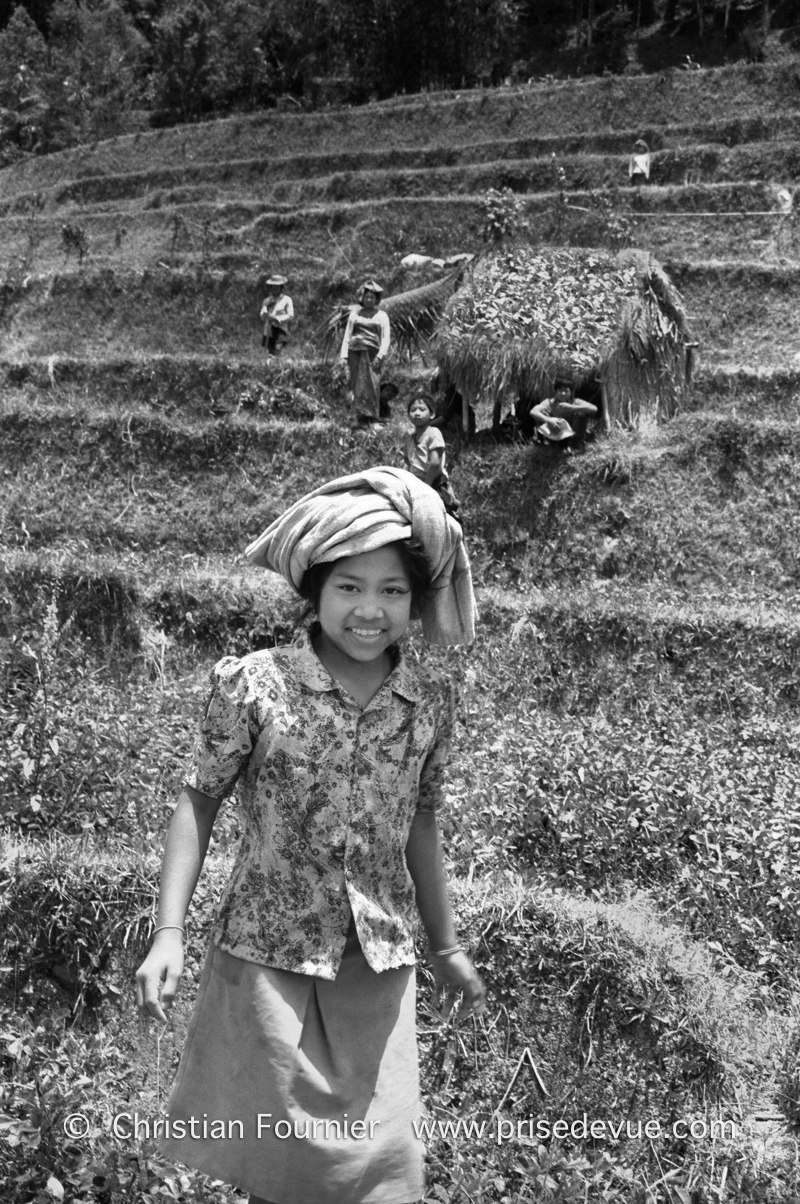 |
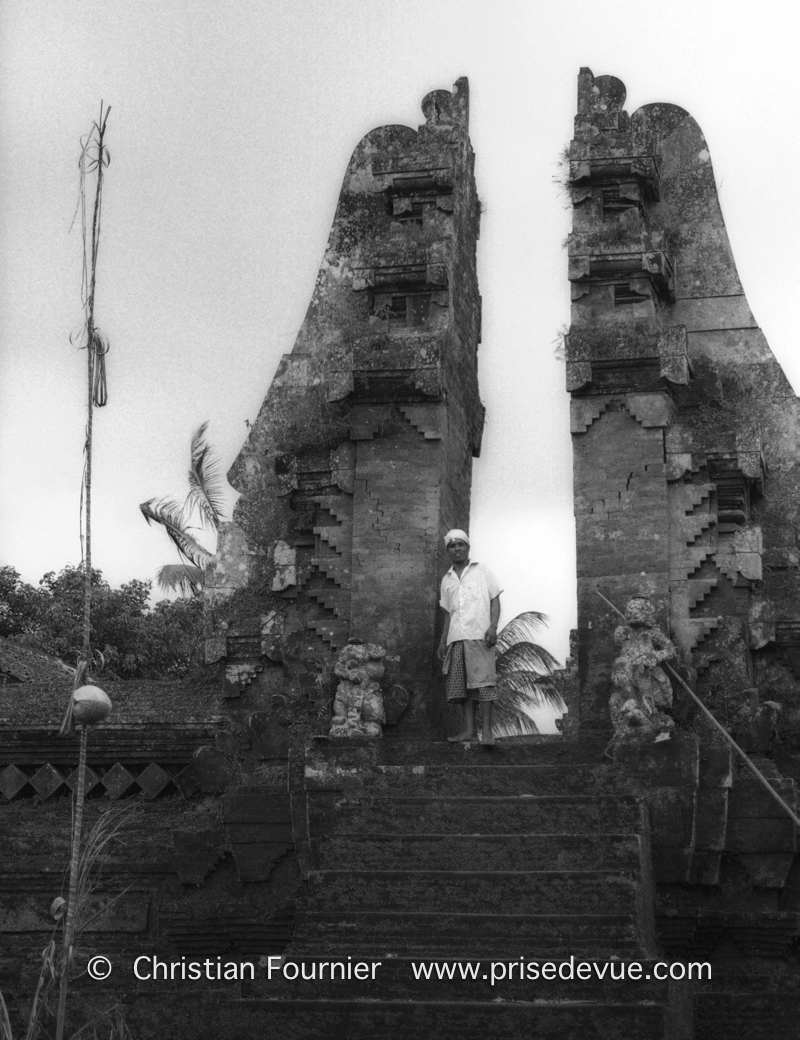 |
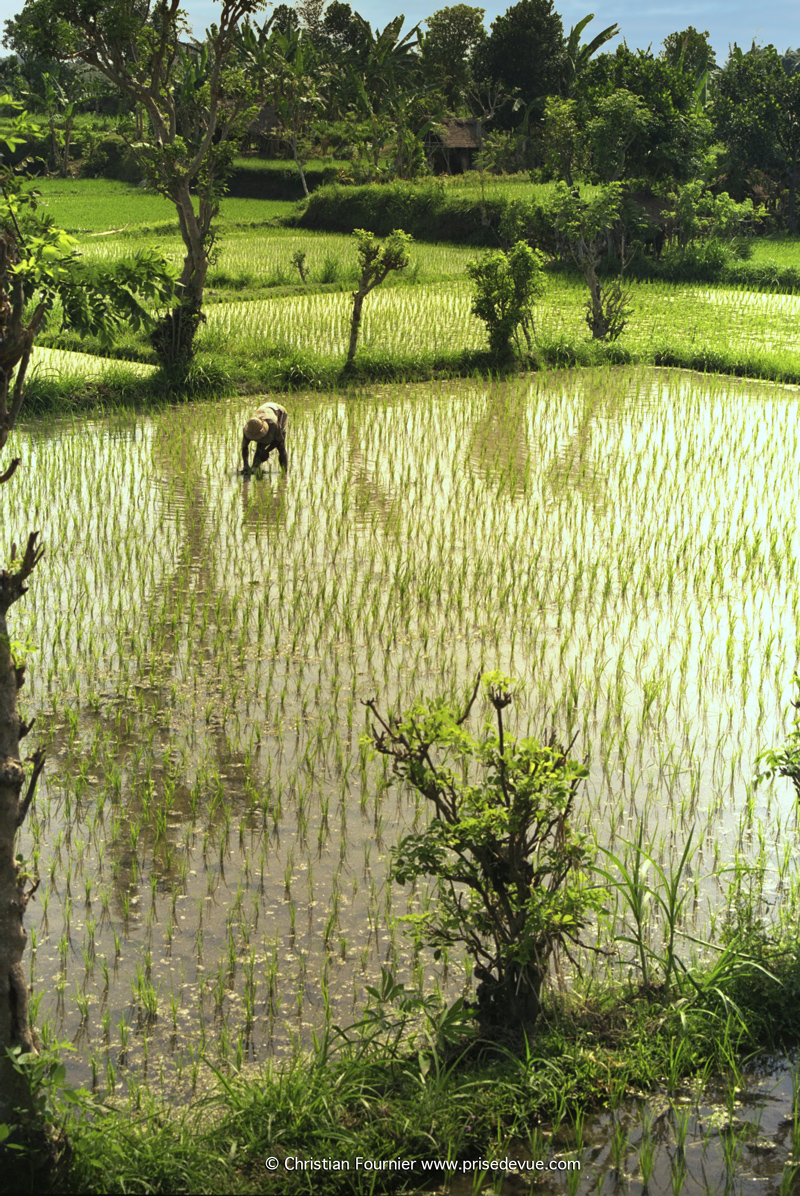 |
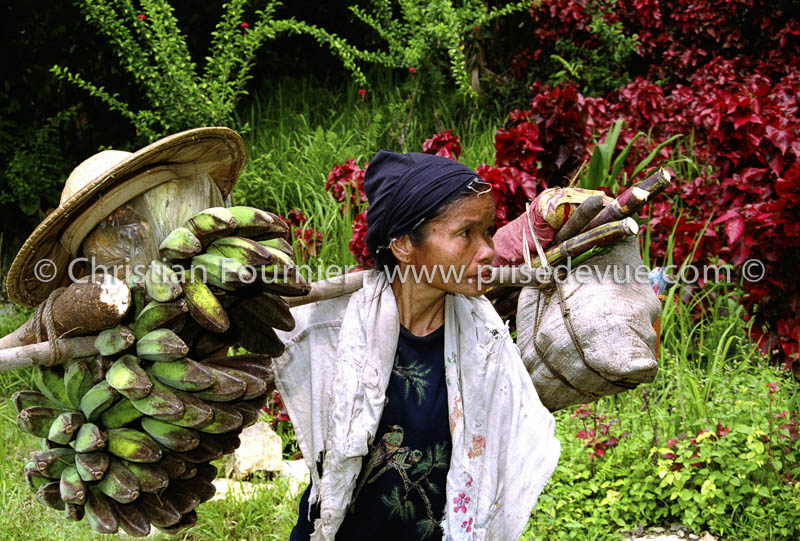 |
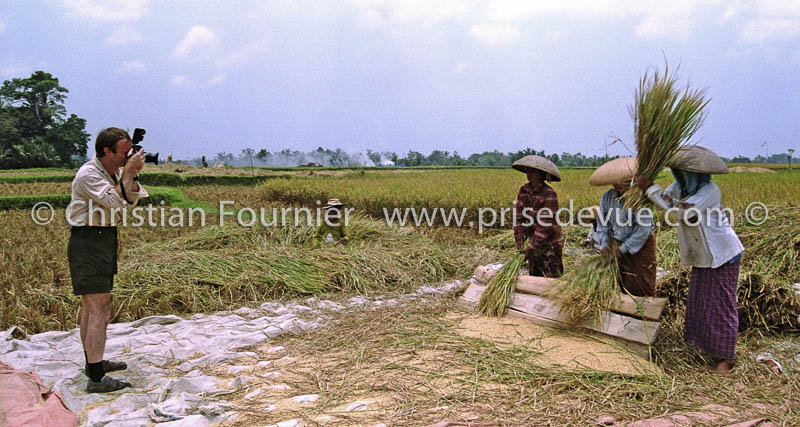 |
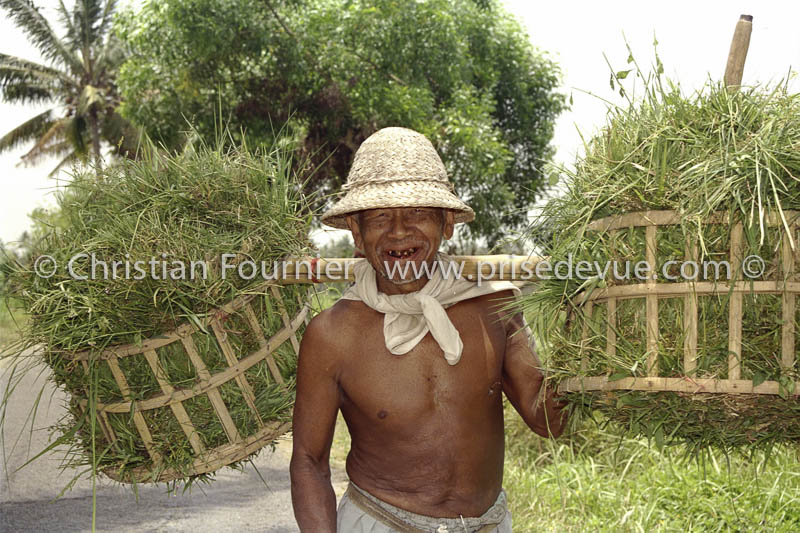 |
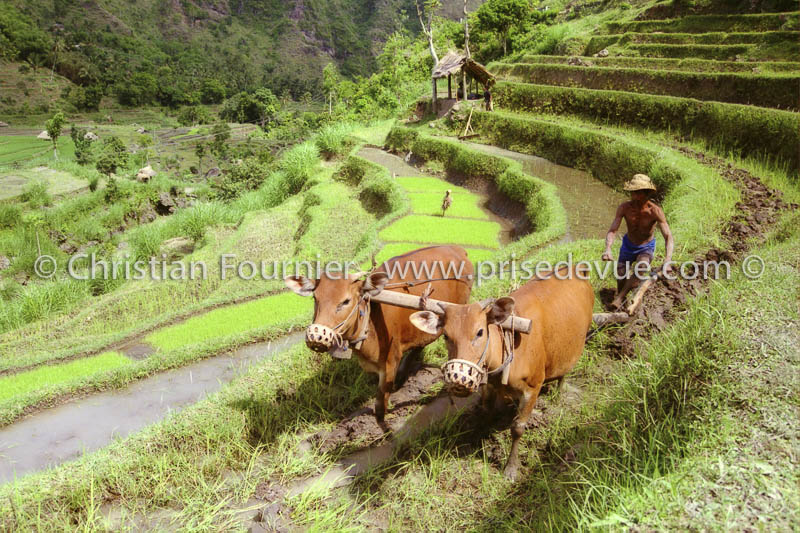 |
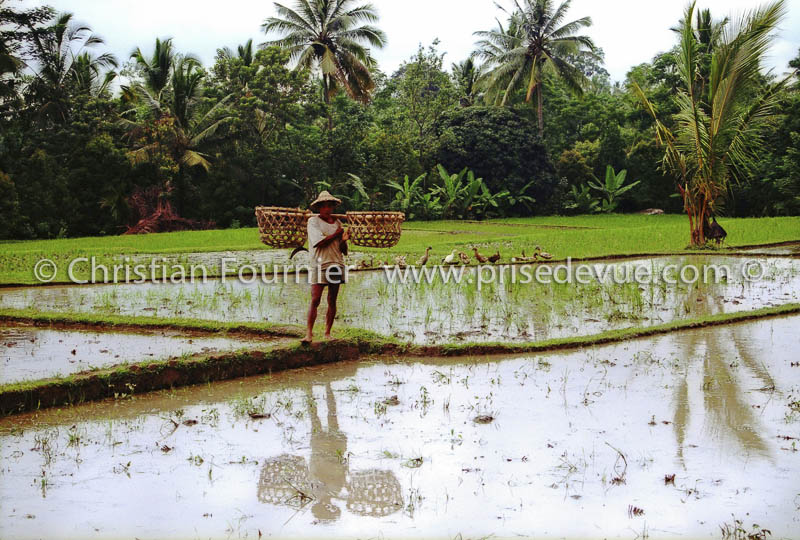 |
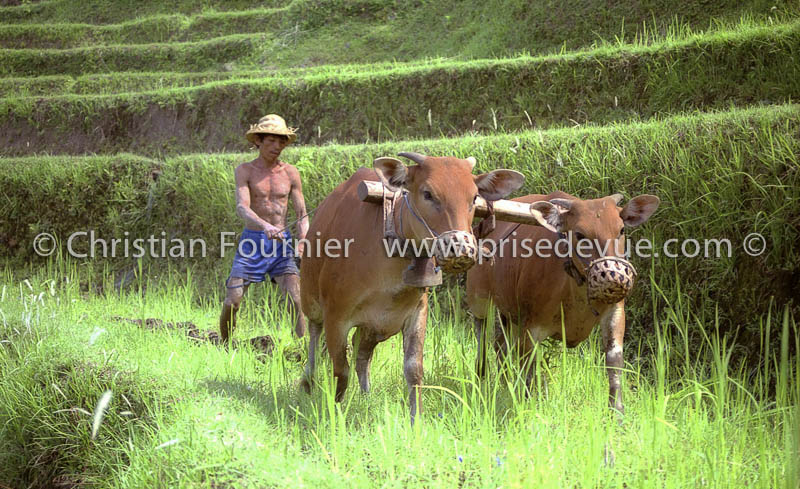 |
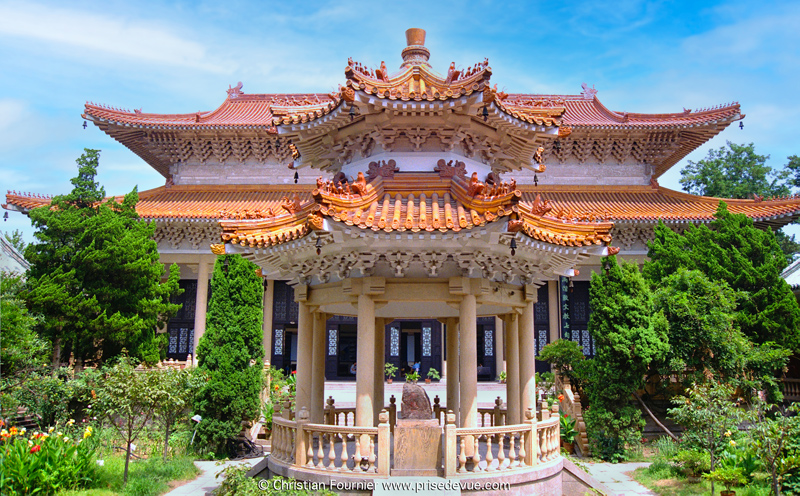 |
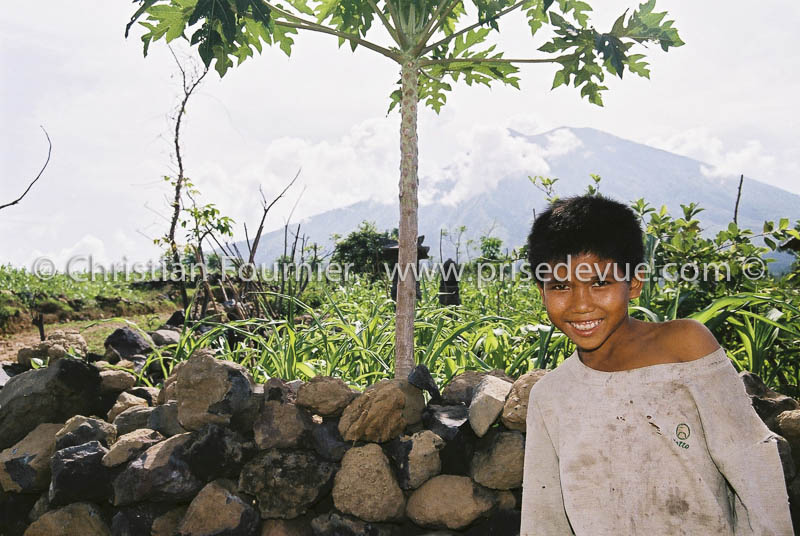 |
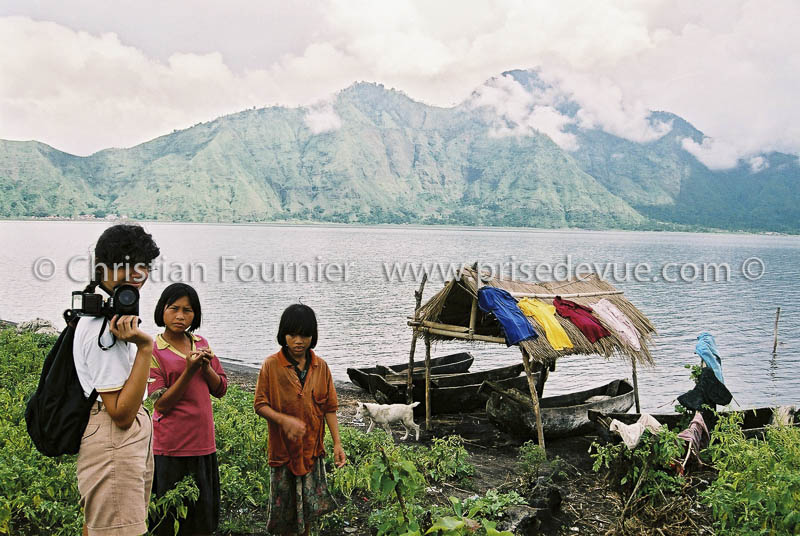 |
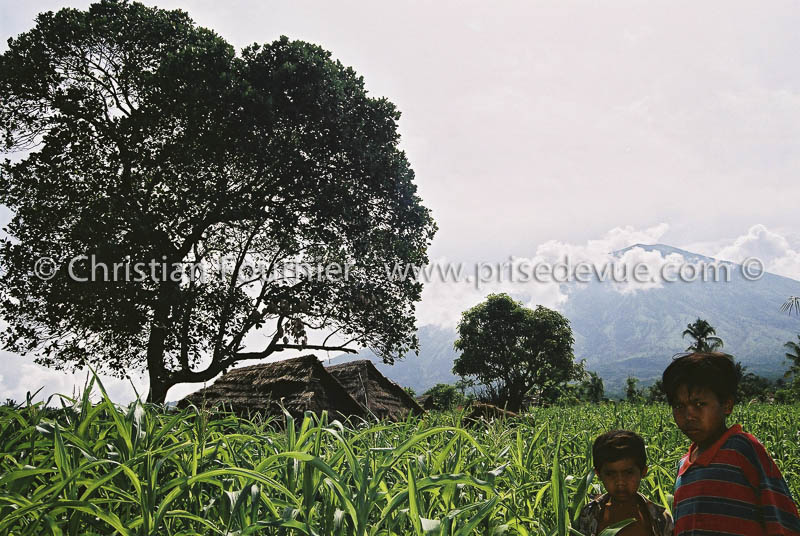 |
|
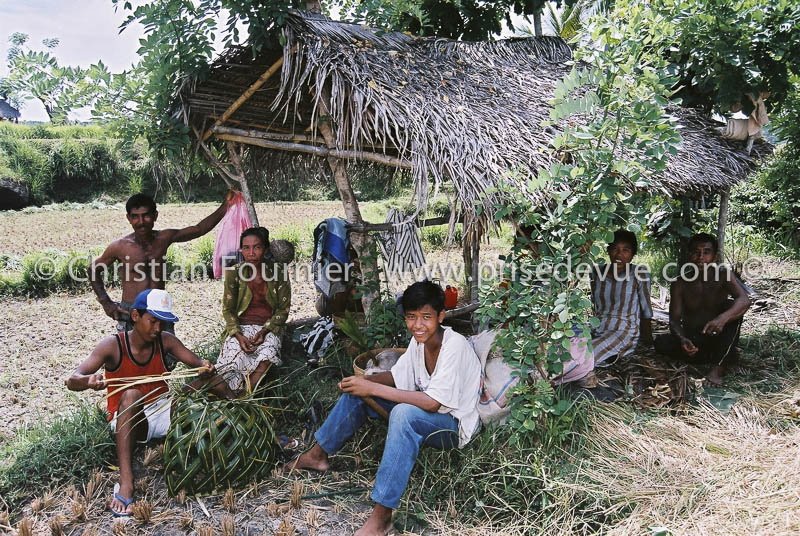 |
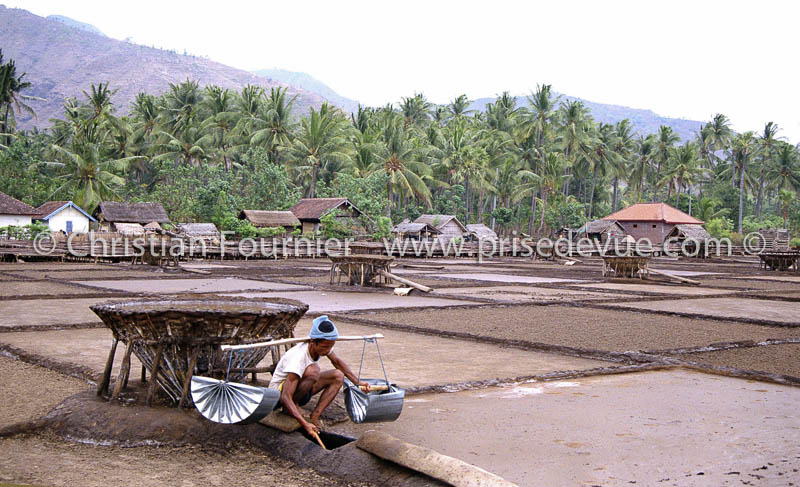 |
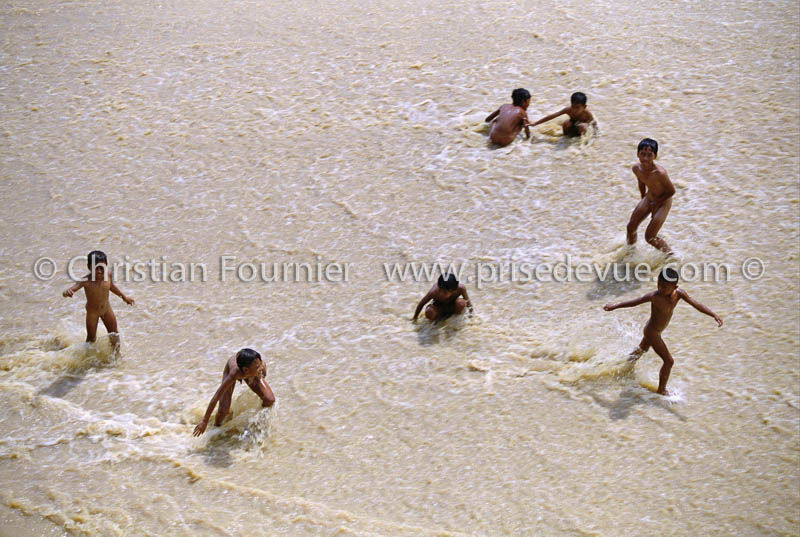 |
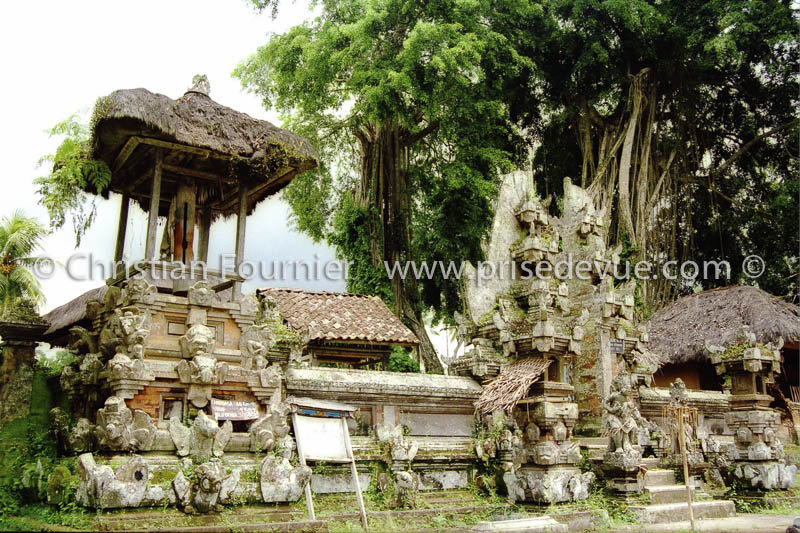 |

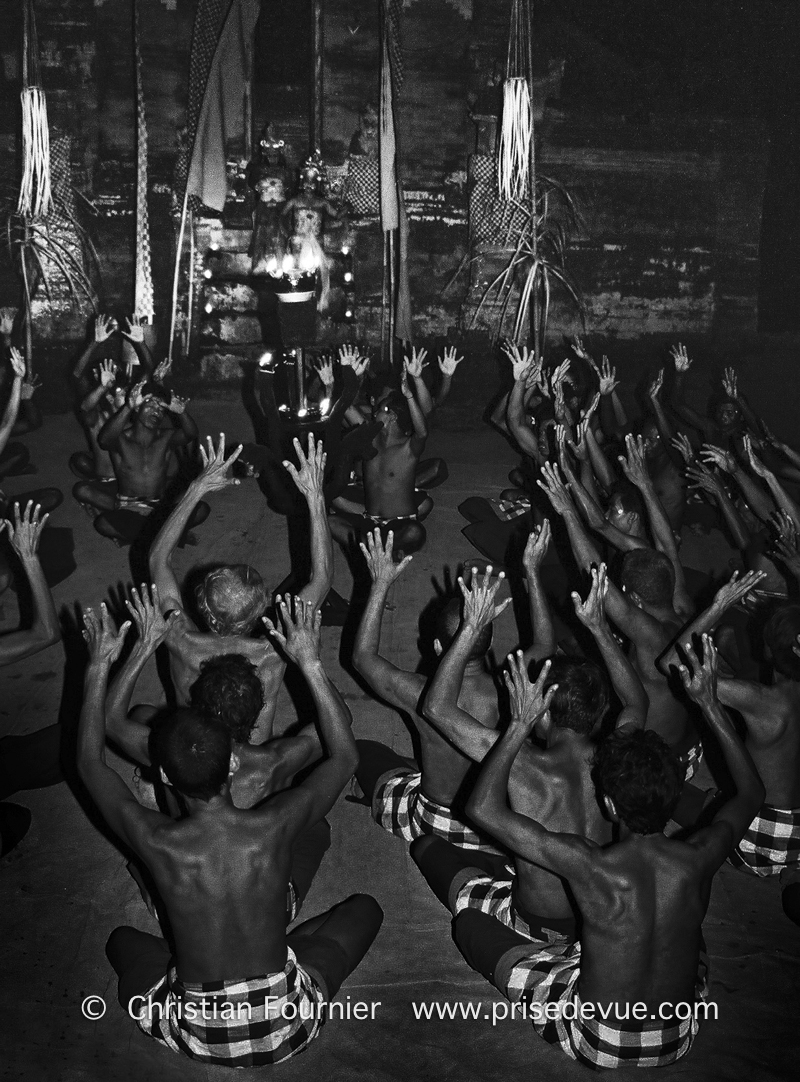
|
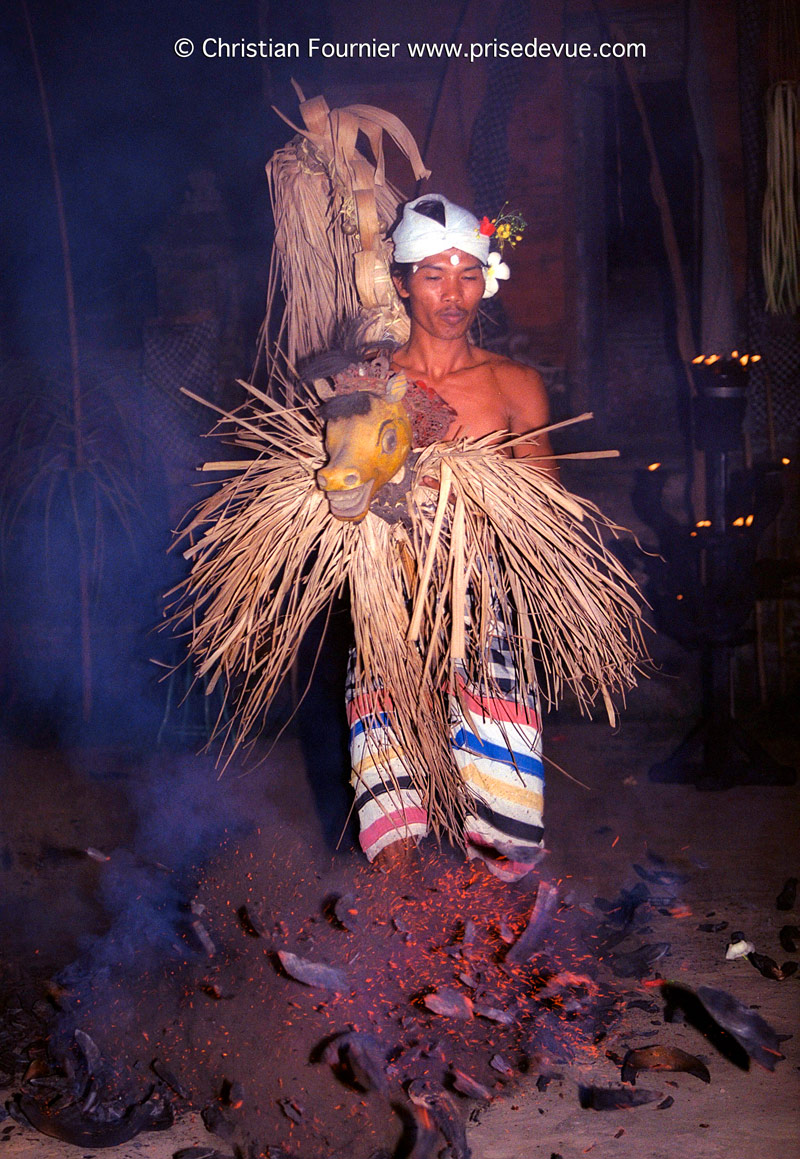 |
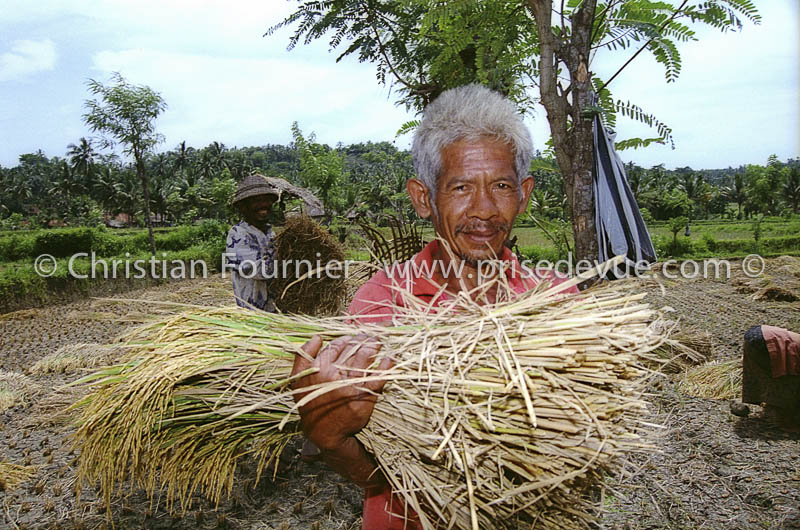 |
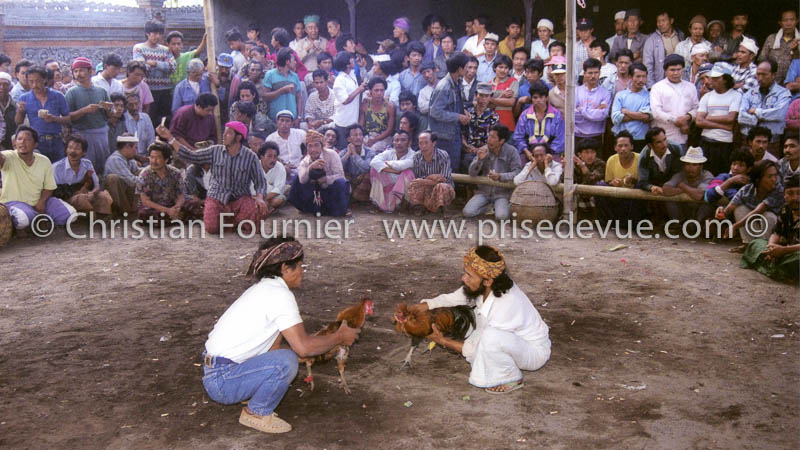 |
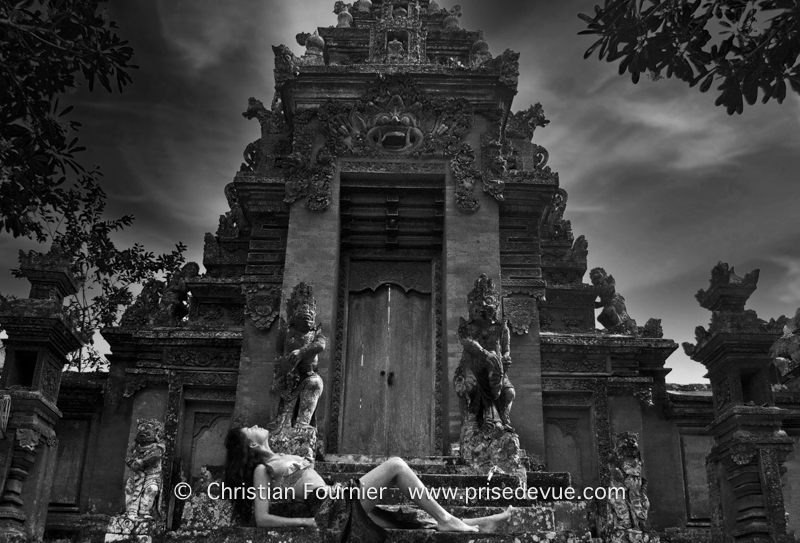 |
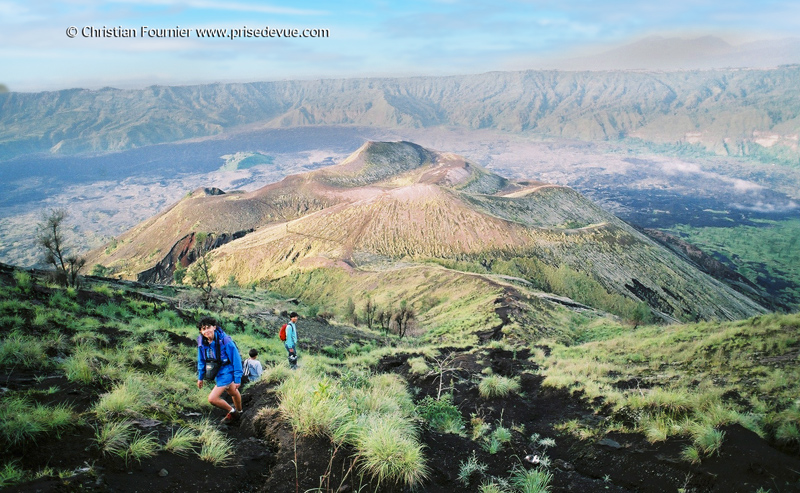 |
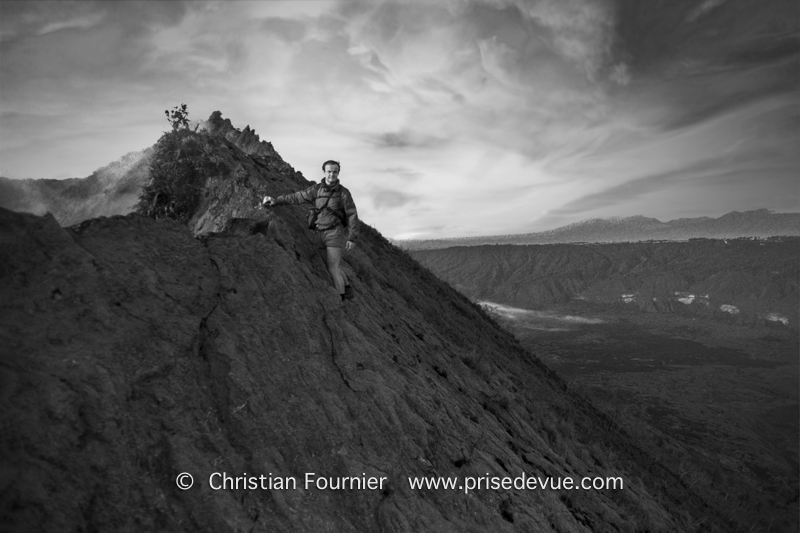 |
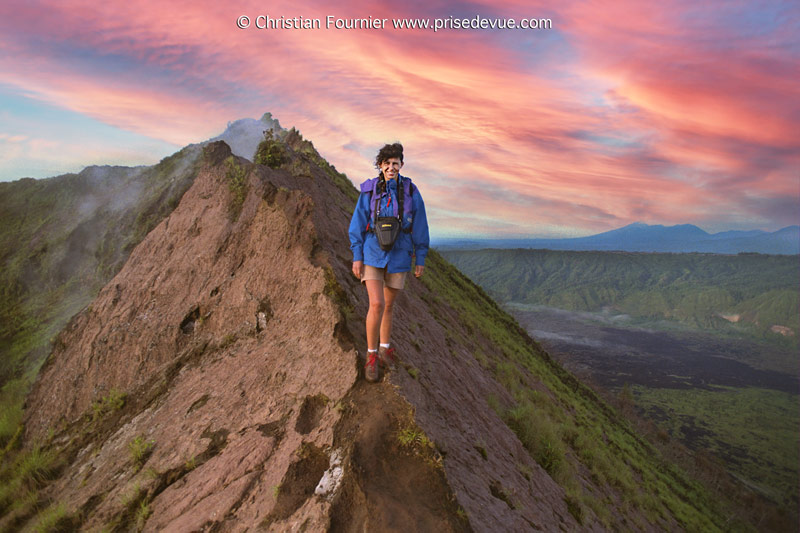
Sunrise on mont Batour. |
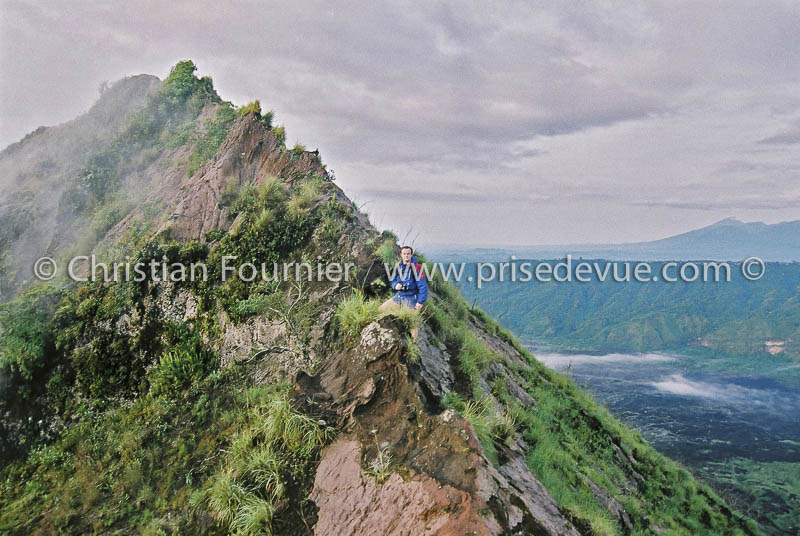 |
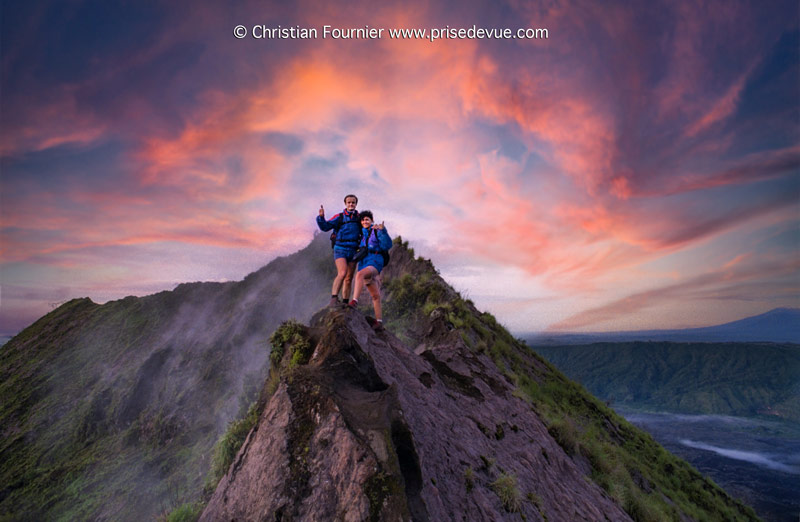
Sunrise on mont Batour. |
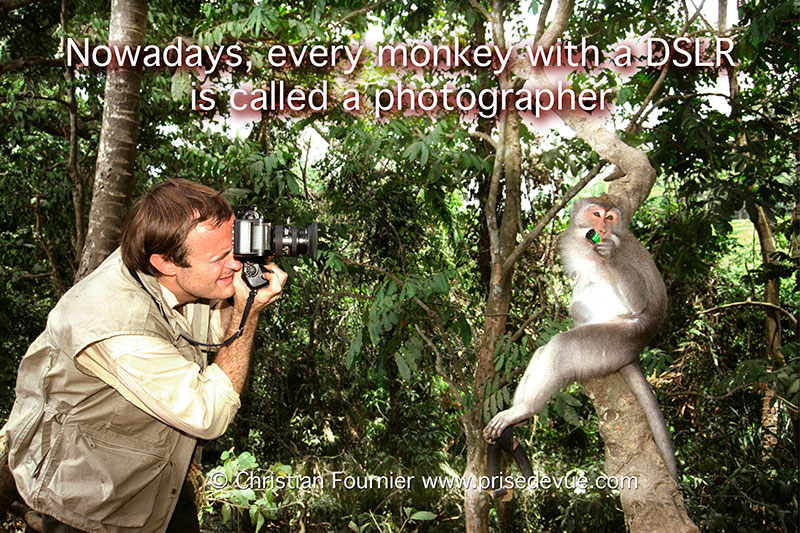 |
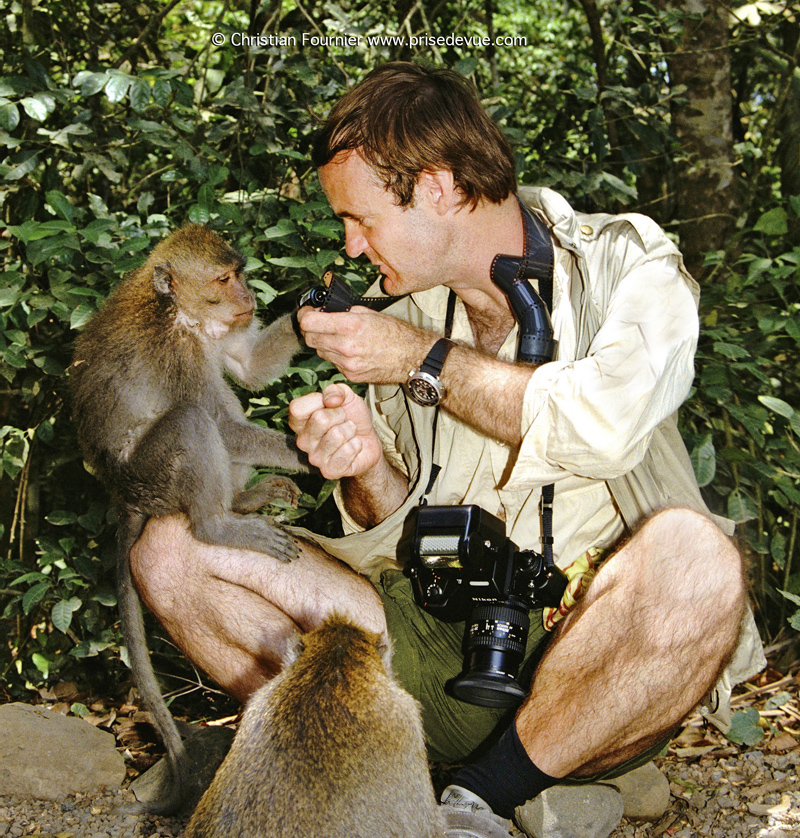 |
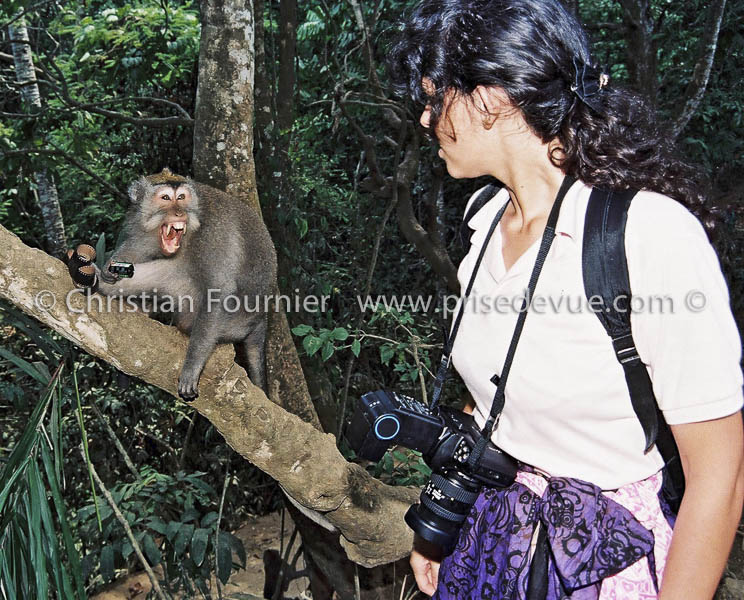 |
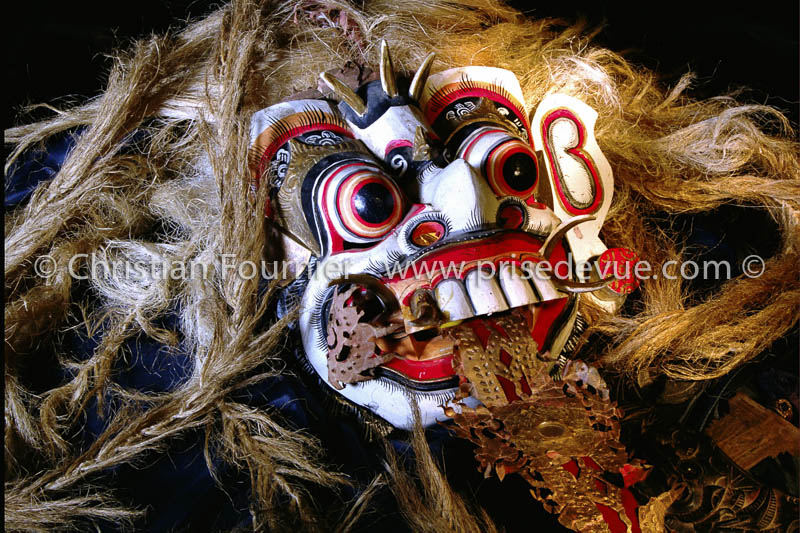 |
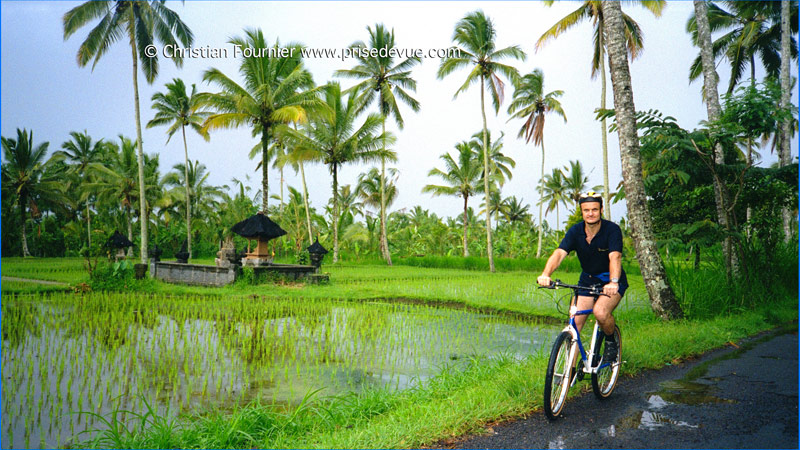 |
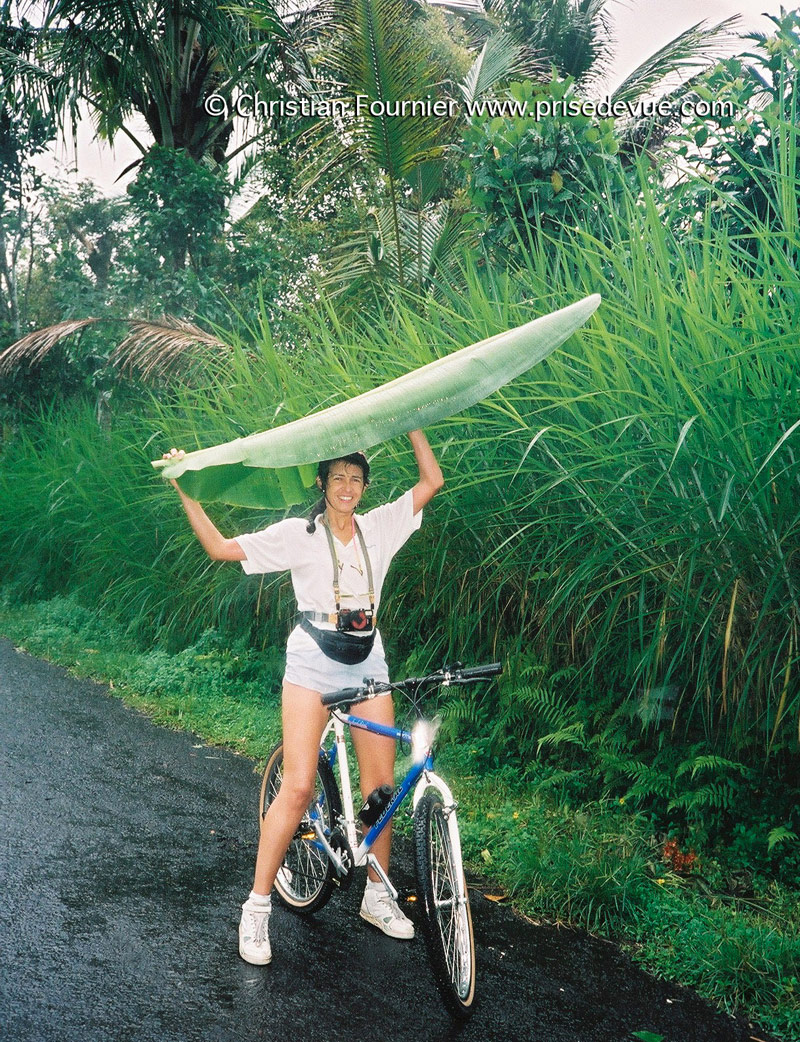 |
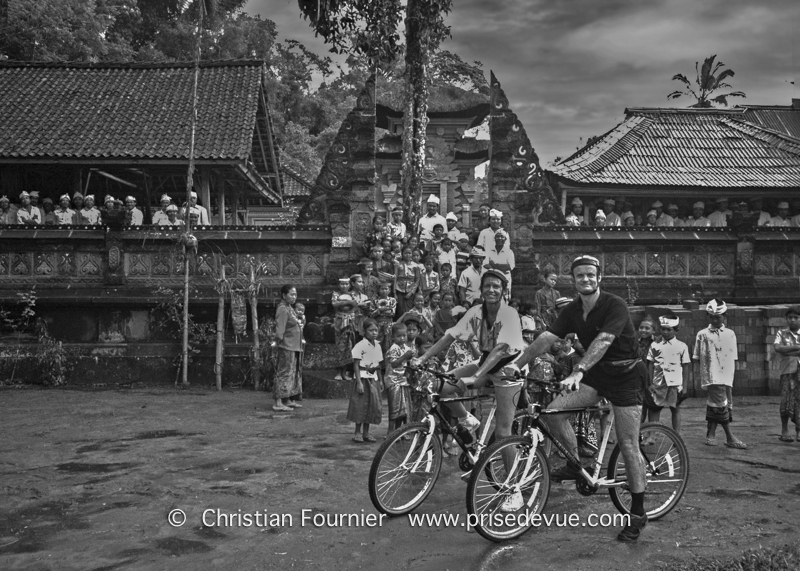 |
.jpg) |
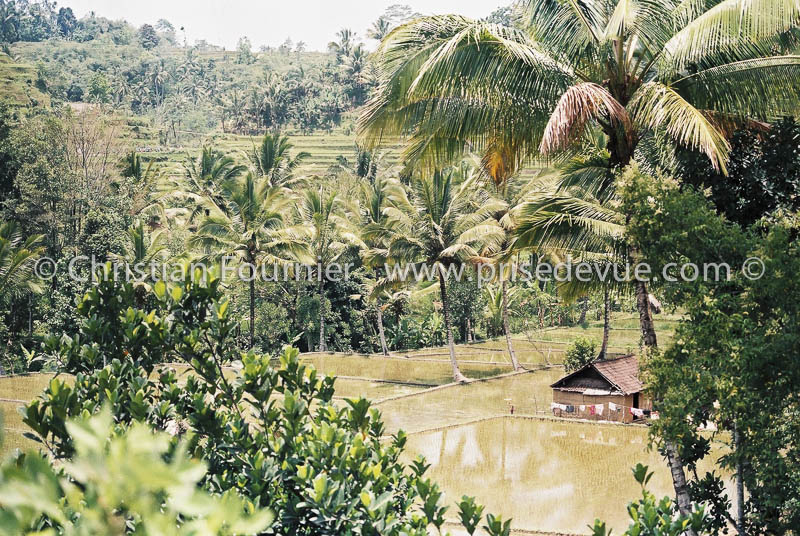 |
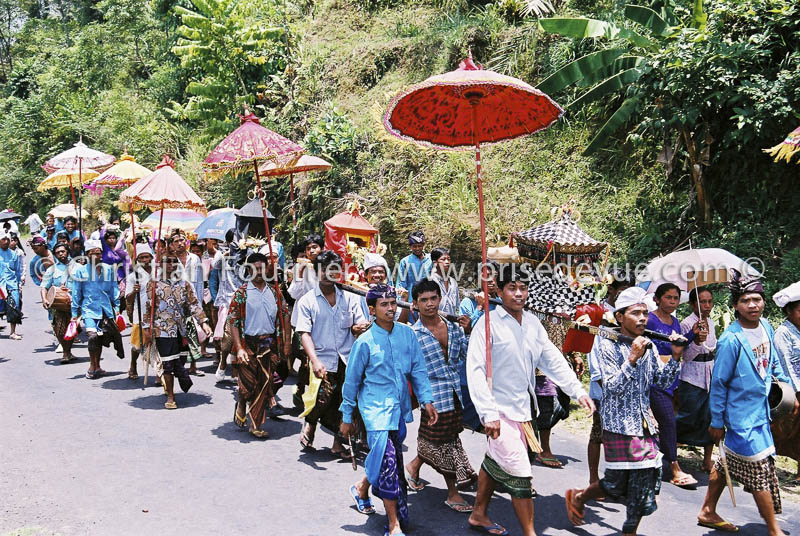 |
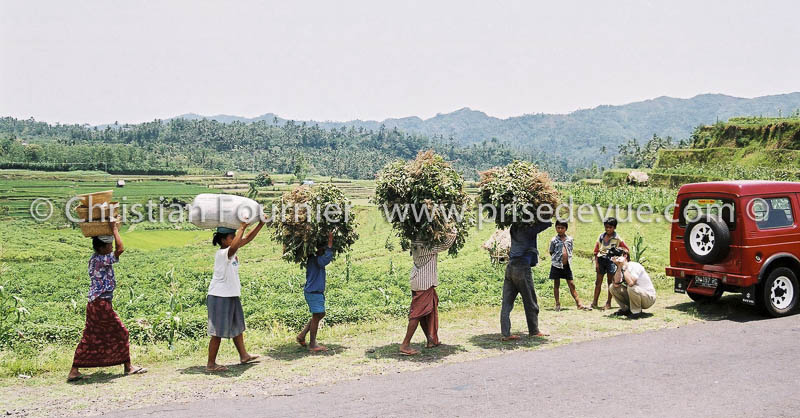 |
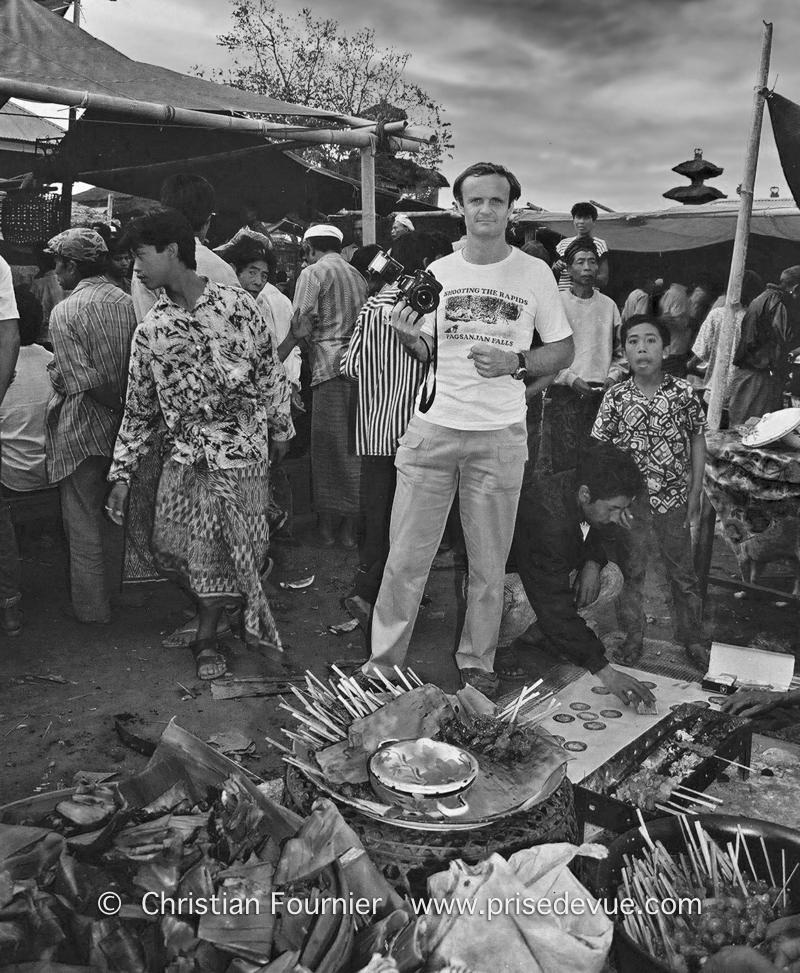 |
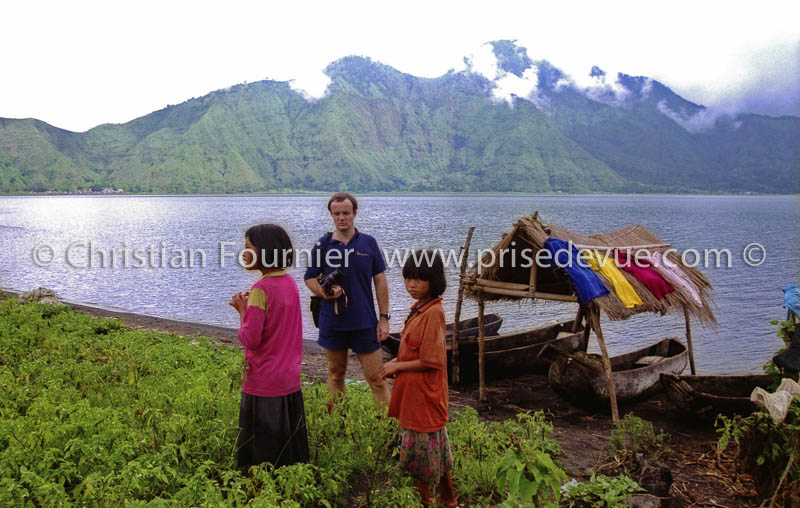 |
.jpg) |
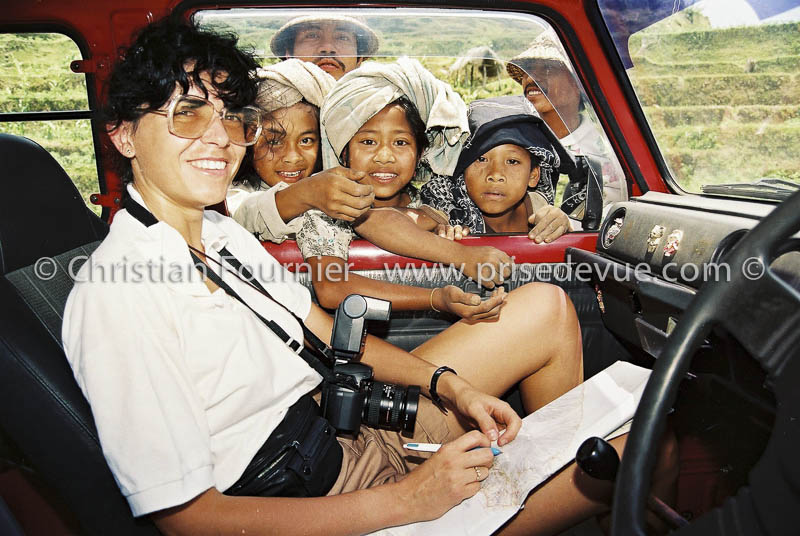 |
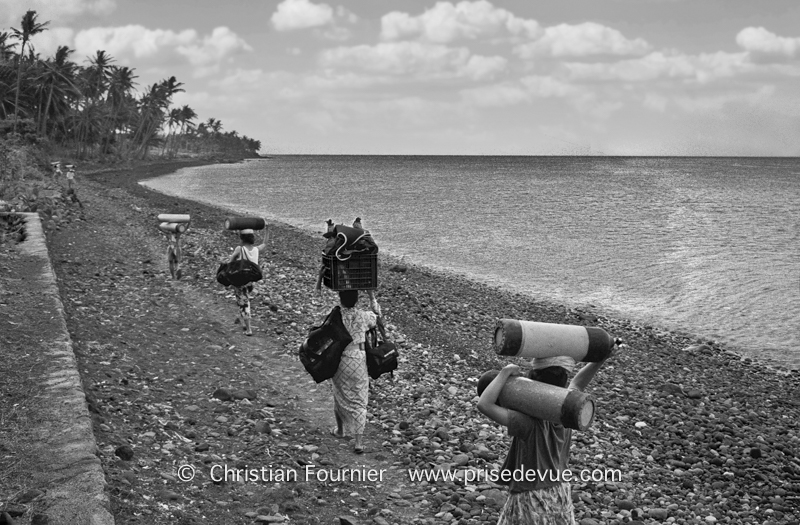 |
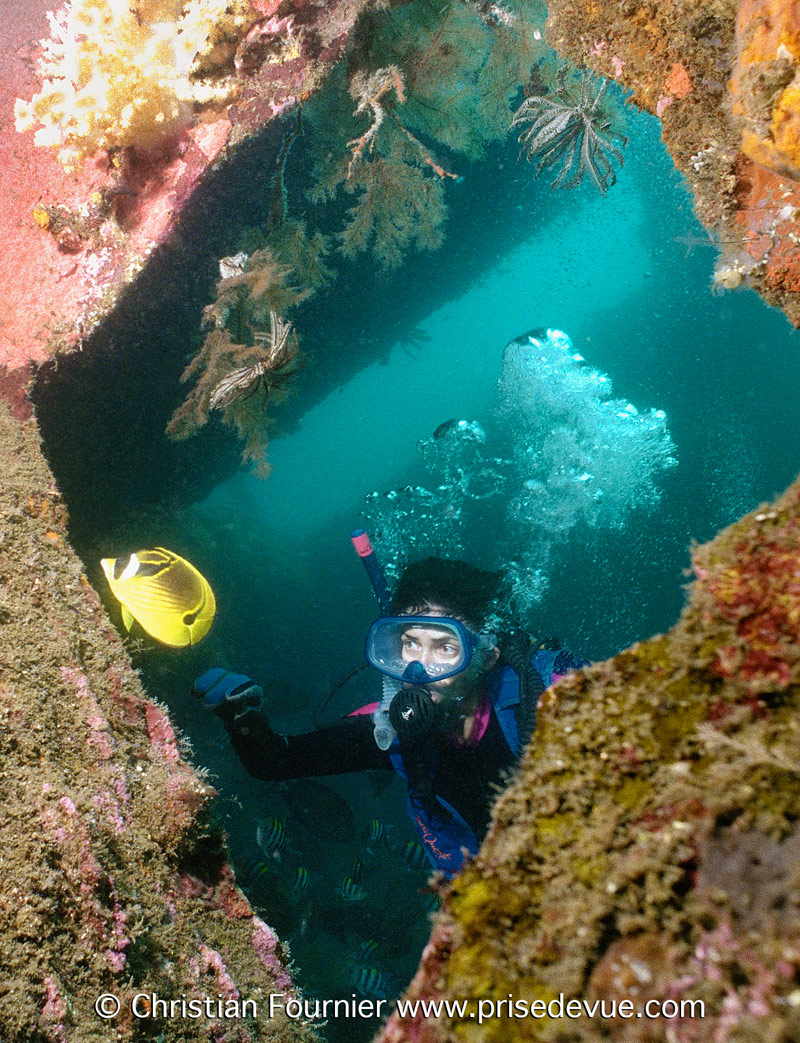 |
The island of Bali in Indonesia is often referred to as a paradise on Earth, but we found it to be also a paradise underwater.
We decided to go to Tulamben for the first dive. Located two hours east from Candidasa Beach, in the less tourist part of the island, our drive took us through gorgeous green rice paddy fields to the desolated area of Mount Gunung Agung where the eruption of the volcano wiped out rice fields and villages, leaving lava beds covered with scarce vegetation. We arrived to the small village of Tulamben, famous among the local diving community for the wreck of the S/S Liberty. We parked at the usual divers restaurant, on the beach. Balinese women insisted on carrying our tanks and weight belts, on their heads, to the dive location, about 500 feet away. This was already quite a sight in itself !
The wreck is easily accessible from the dark pebbled beach (300-feet swim, no current). The S/S Liberty sits on a sandy bottom, its bow at 90 feet and stern at 40 feet. The water is warm : no wetsuit is necessary. The visibility is around 70 feet, but we were told that it can drop to 35 feet during the monsoon season. The wreck has become, as is usually the case, an artificial reef with a lot of marine life. No large animals, but sergeant majors, parrotfish and butterfly fish are plentiful.
The ship was a 120-feet cargo boat carrying rice flour and was sunken by a torpedo during World War II. Surprisingly, some bags are still lying at the bottom. We poked one open with our dive knives and hundreds of fish immediately rushed to eat the entire contents, creating a large white cloud.
We swam in and out of the wreck. The metal frames are covered with small but healthy and colorful soft corals. A 15-feet steel mast is still standing straight, enwrapped in coral. We decided to use it as a photographic background for our fish feeding session. As soon as we took the bread out of the sealed bag, hundreds of reef fish besieged us so compactly that photography was impossible. In order to put some distance between the fish and the photographer, the diver holding the bread swam away at very fast pace around the mast. So we had an hilarious chase, diver and cloud of small fish, round and round.
With nice deep blue water, lots of openings in the hull of the ship and abundance of fish, Tulamben is an underwater photography paradise. Add to this the warmth of the water, the lack of current, the easy access from the beach and the unspoiled location : Tulamben is indeed a scuba diving heaven.
Text and Photos : Christian Fournier
|

Head shots
|
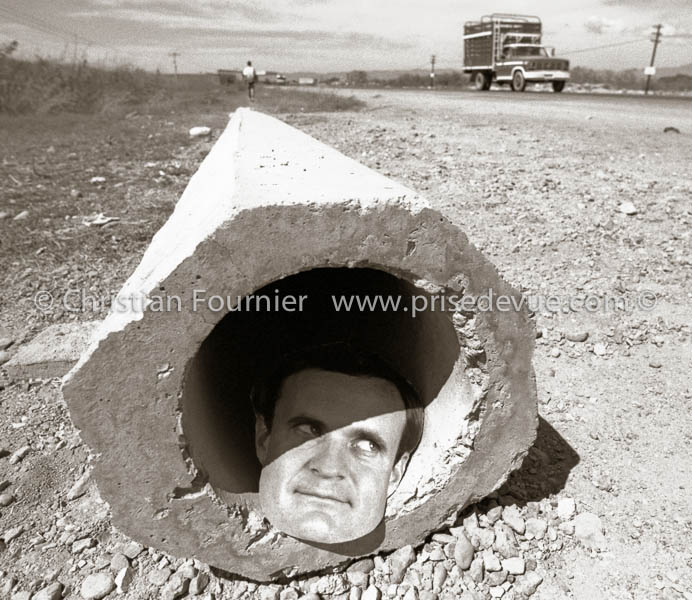
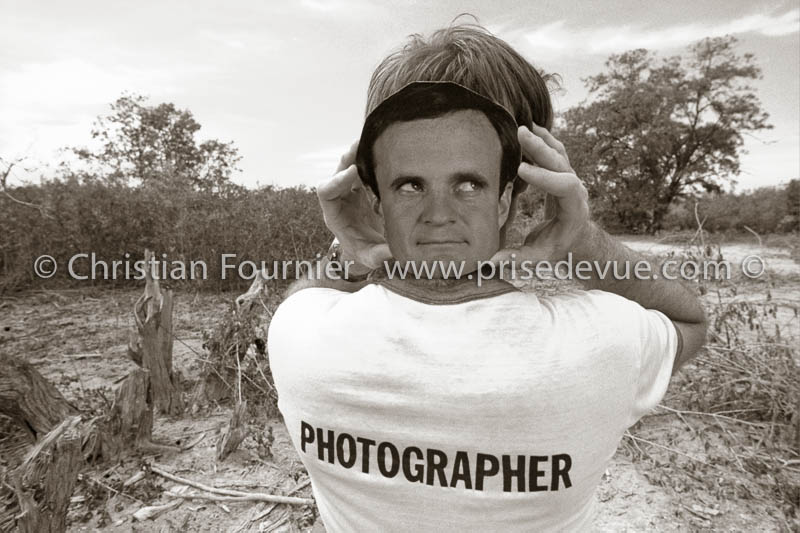
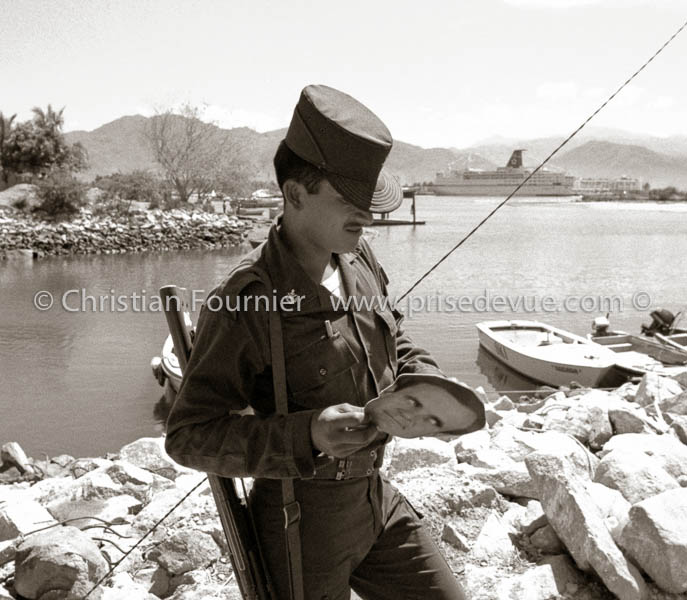
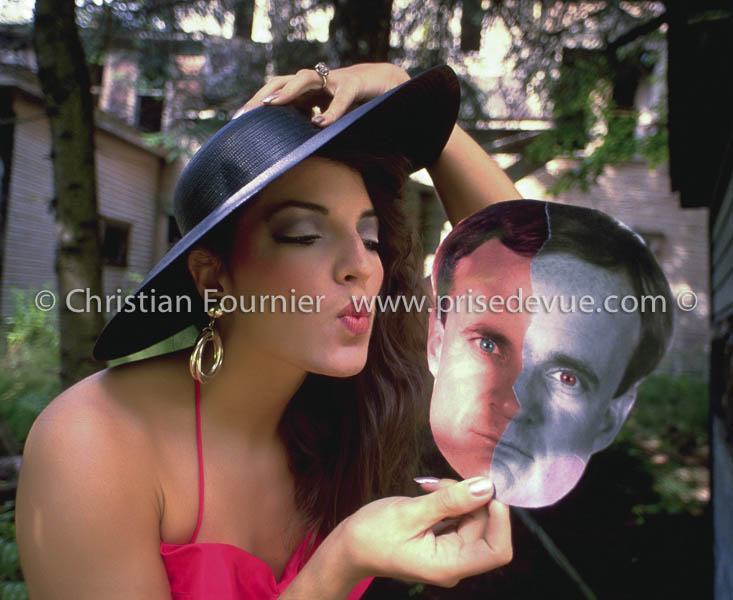
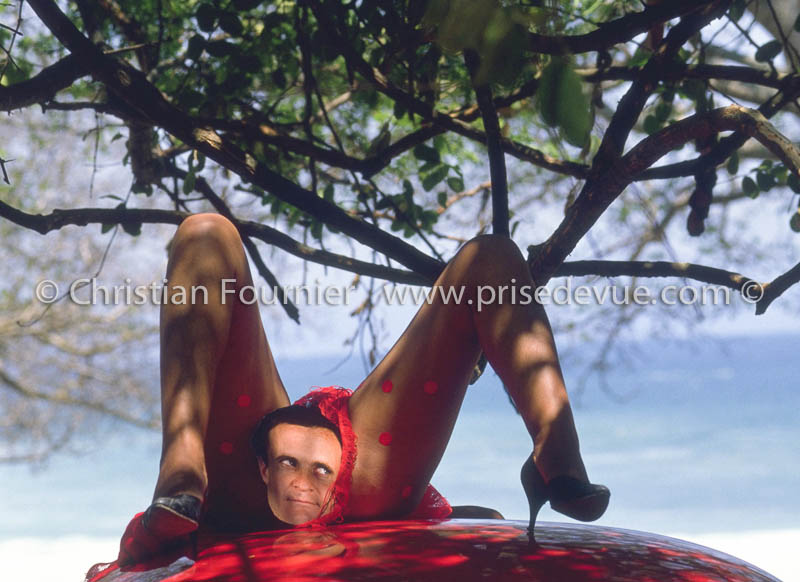
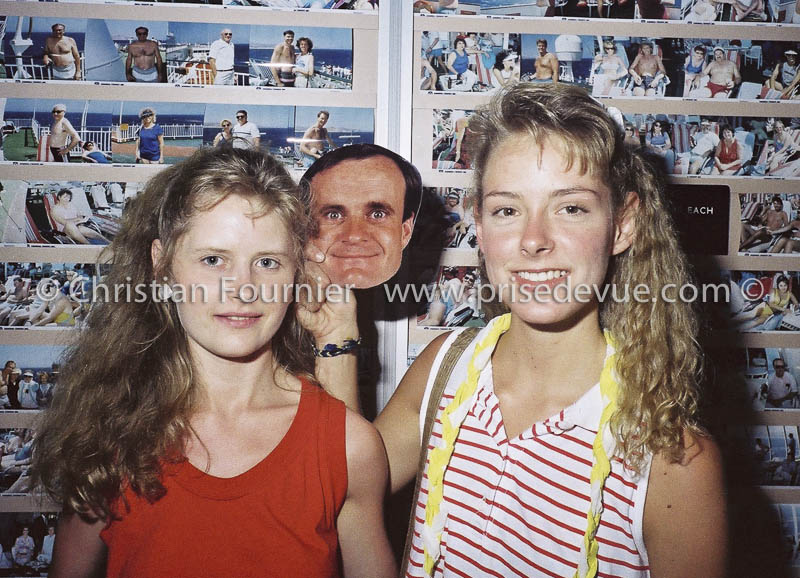


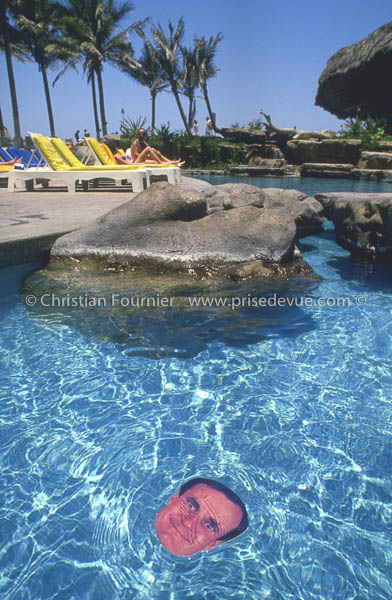
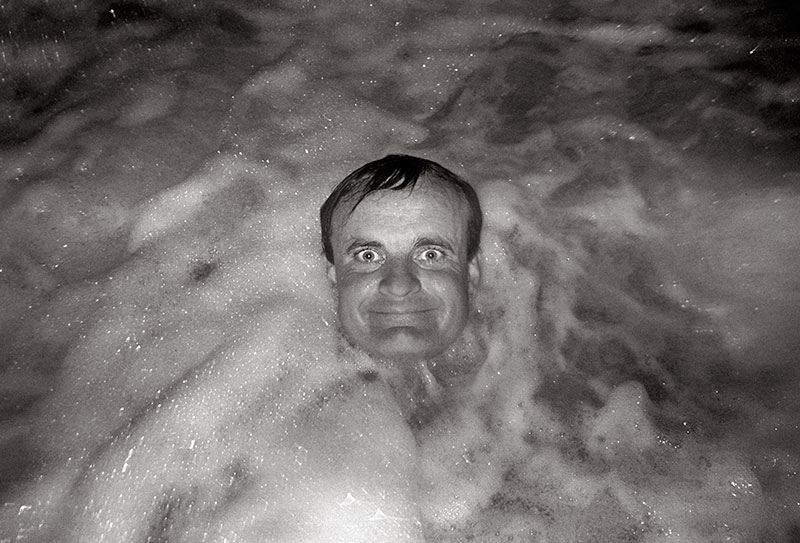

1988
The portrait of Dorian Gray: Plus la photo est vieille, plus j'ai l'air jeune !
The older the picture, the younger I look!

2015
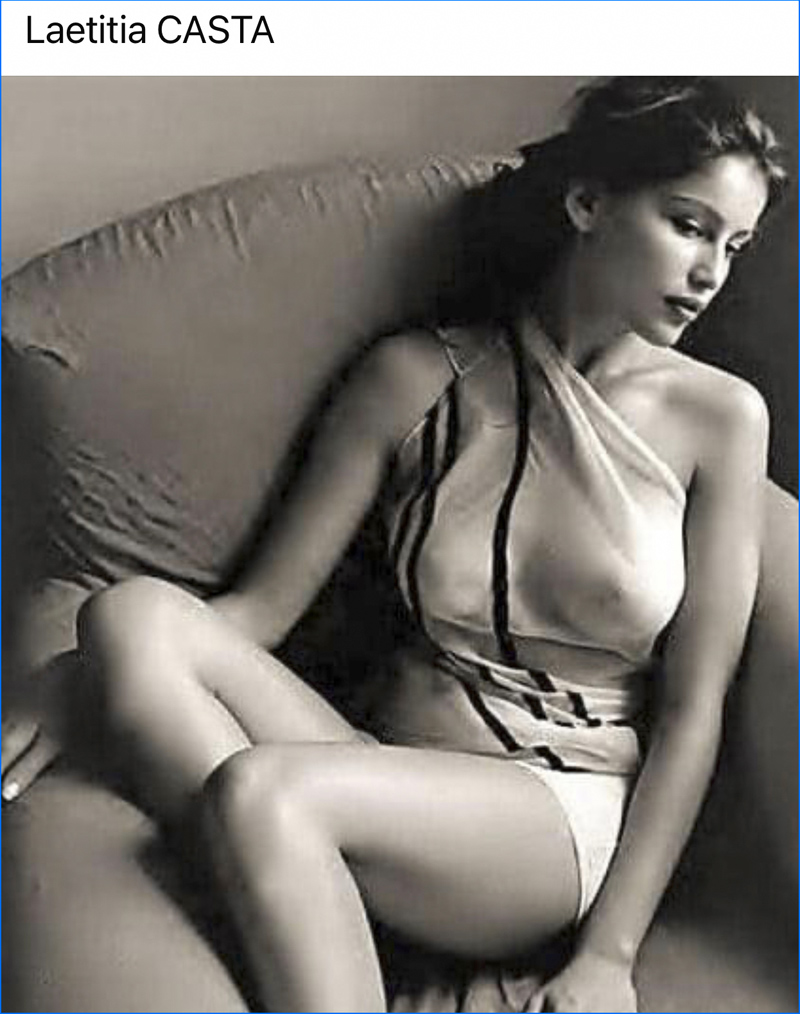
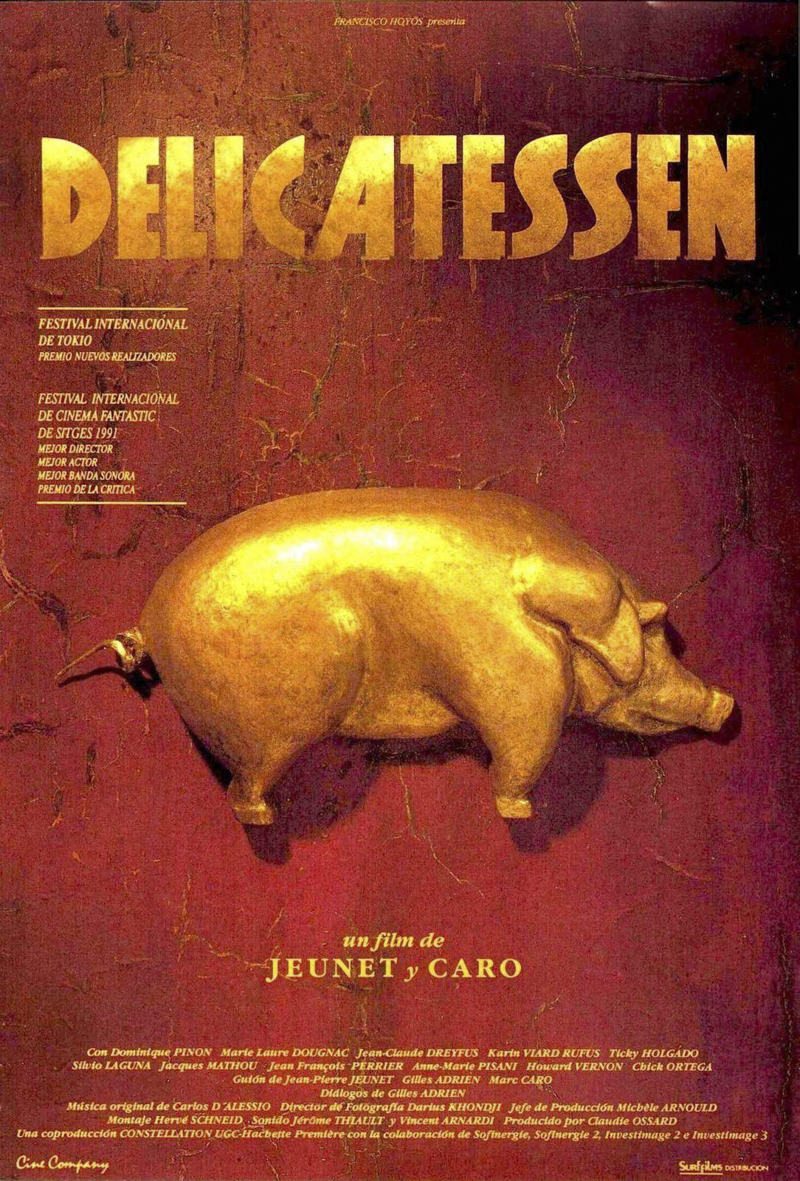
|
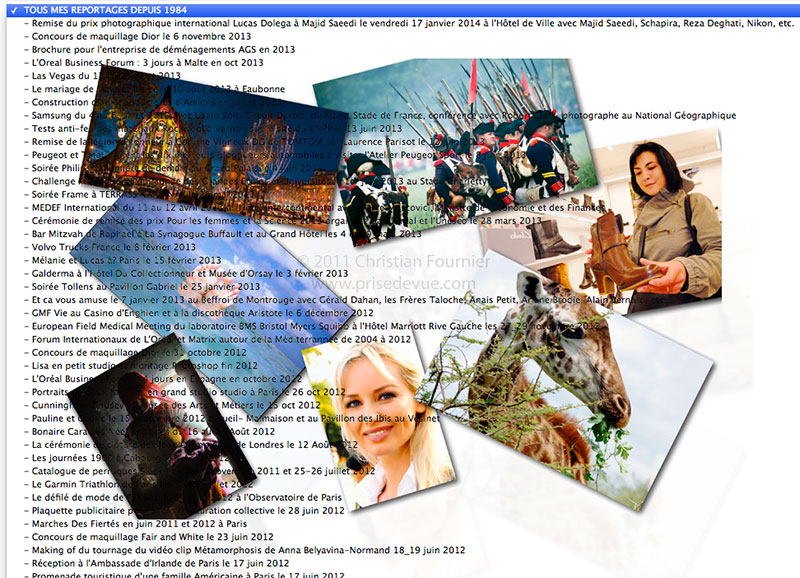
Here are about 620 examples of my photographic event coverage since 1984, that is to say, 30 years. This is without counting those which my clients have requested that I do not show and photos that have been lost.
I know it's enormous.
No, I am not a photographic robot: my mother had me tested
This list begins with the compilations: Fashion & Models, Lingerie, Beauty, Makeup & Hair, Portraits, Events, Objects, Archi & Deco, Industry, Press, Celebrities, etc.
The sensors and web capabilities from 1995 to 2005 were horrible compared to now (2021). 40 KB max by images. My uploads at this time were therefore bad. I replace them little by little. It's long. Thank you for your indulgence.
Conclusion 1: I must not be bad, so that all these people trust me.
I have loyal customers, a sign that they are satisfied with my services. Examples: Tollens, MEDEF, Dior, GMF, Unesco, L'oréal, Anaé, Agefiph, Essilor, Genzyme, Embassy Ireland, The Advertisers Club, Garmin, VW, etc. ...
Conclusion 2: Thanks to all these varied clients (industry, wedding, corporate and personal portraits, press, events, objects, medical, culinary, diving, sports, pageants, etc. ..), I see extraordinary slices of life, confidential or public, trades and fabulous countries. I do feel very privileged. Real life, live. Thank you customers.
In rough estimation, I take 5,000 photos a week. 5,000 x 52 = 260,000 a year. For 35 years = 9,100,000 photos. Well, I would like to reach 10 million anyway!
Conclusion 3: Photography is my language
|
There is also a search command, not always up to date, but pretty comprehensive on all my reportages.
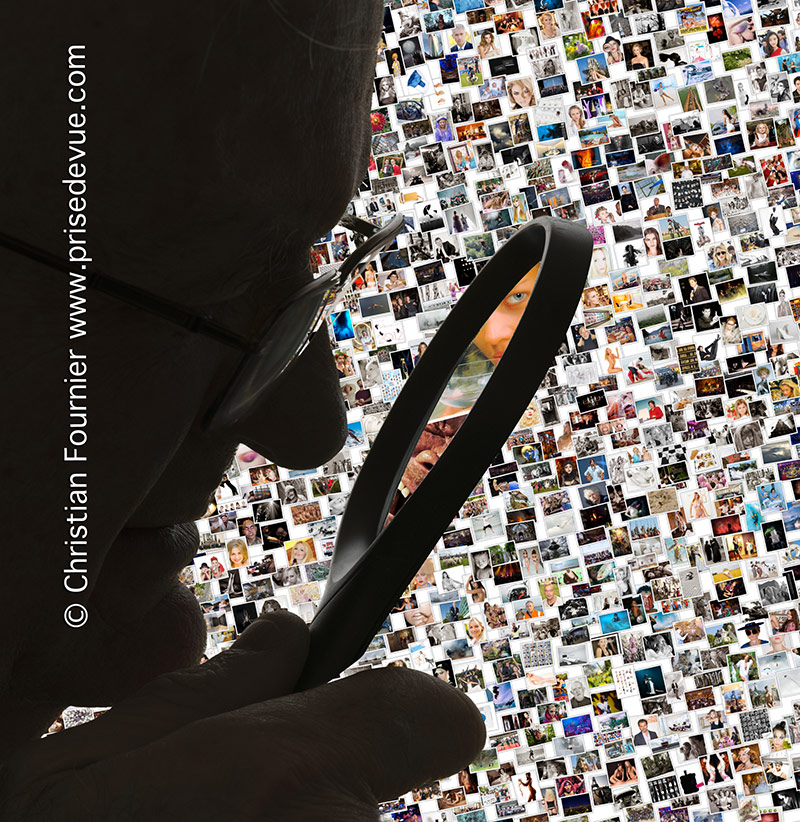
Due to manipulations between prisedevue.photos, prisedevue.photos and famousphotographer.com, some links may be broken. Sorry. I'm working on it !
|
*************************
MY BLOGS
Not many photographers have the courage to show their photos on a daily basis. I do it to show that in a wide range of photography, I always take good photos for my clients. Technical perfection and an obvious sensitivity. If you imagine the logistic necessary for these missions (estimates, preparations, equipment, transports in traffic jams, safety, etc.), you can see that I am a photographer who achieves results in all circumstances.
************************* |
 |
CONTACT
|
 |
| WWW.FAMOUSPHOTOGRAPHER.COM The archives |
*************************
Intellectual Copyright Property 2020 Christian Fournier.
All rights are reserved. All texts, photos, graphs, sound files and videos in this website are protected. Their reproduction, modification and uses on other web sites than those by Christian Fournier are strictly forbidden.
Most of the photos on my web site are for sale, except, of course, the ones for which I do not have the models or decor releases.
I am at your disposal for any query you may have.
|







































































.jpg)





.jpg)




















